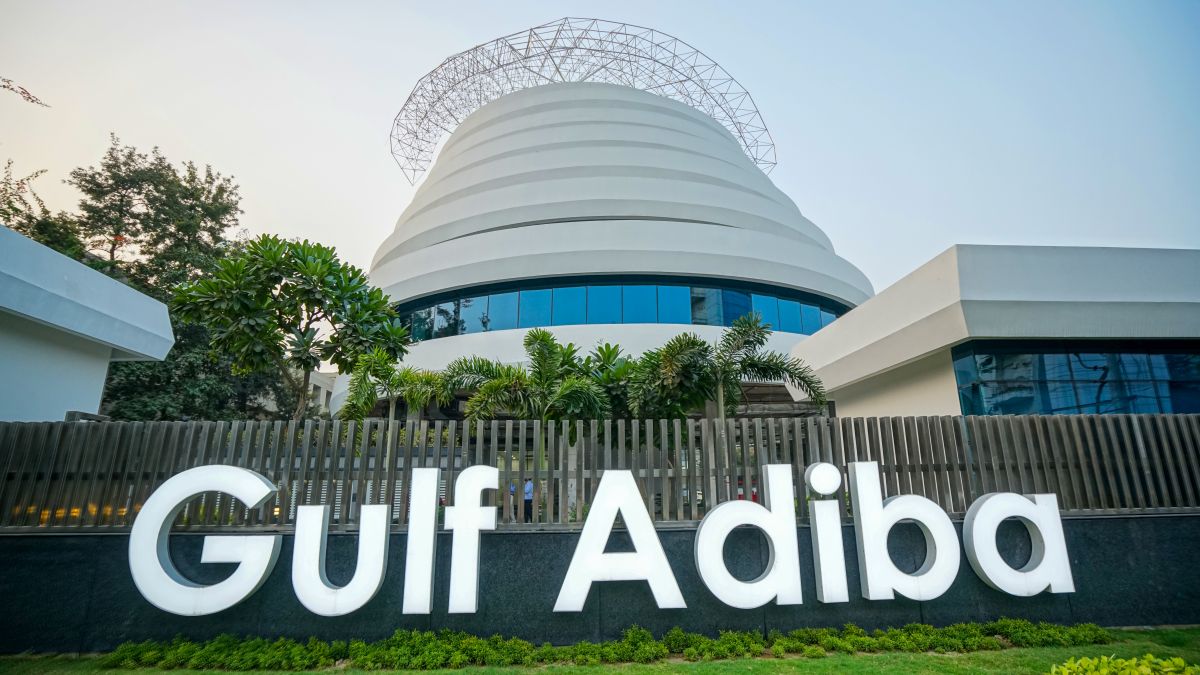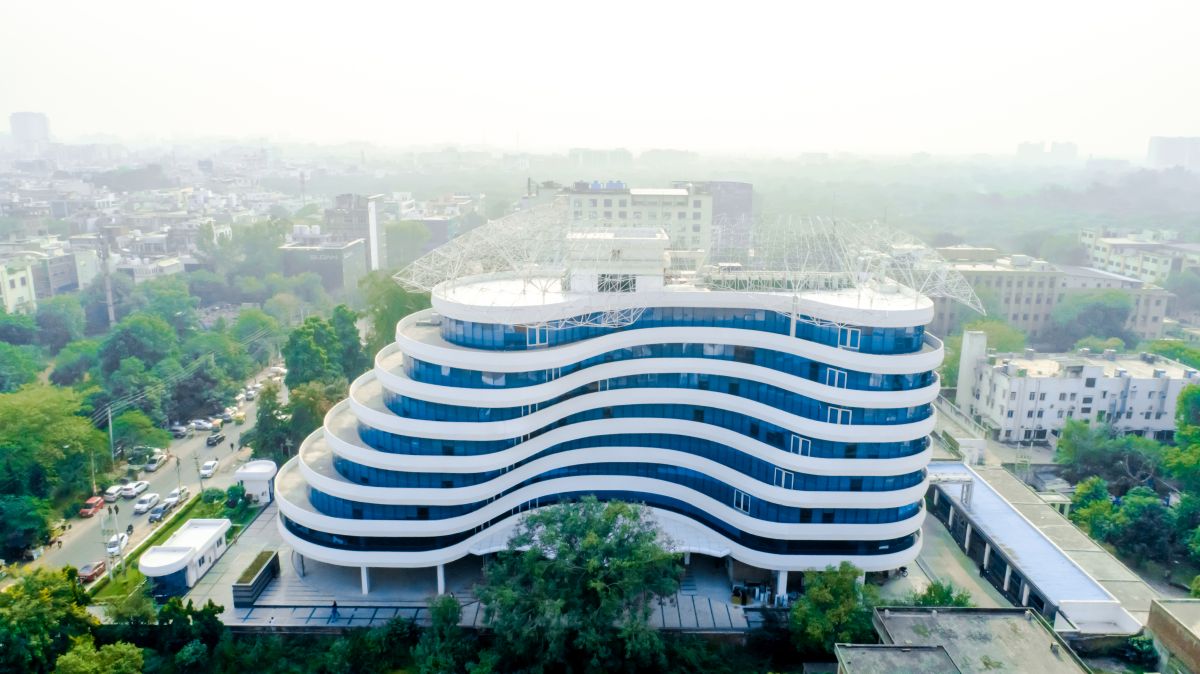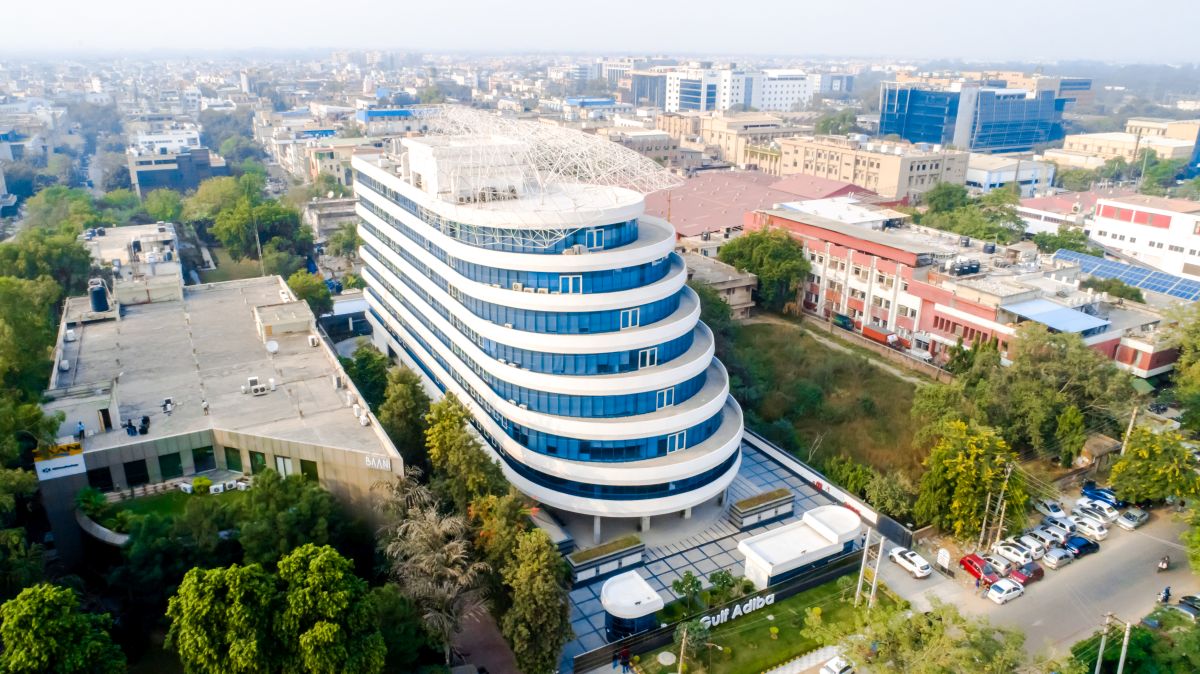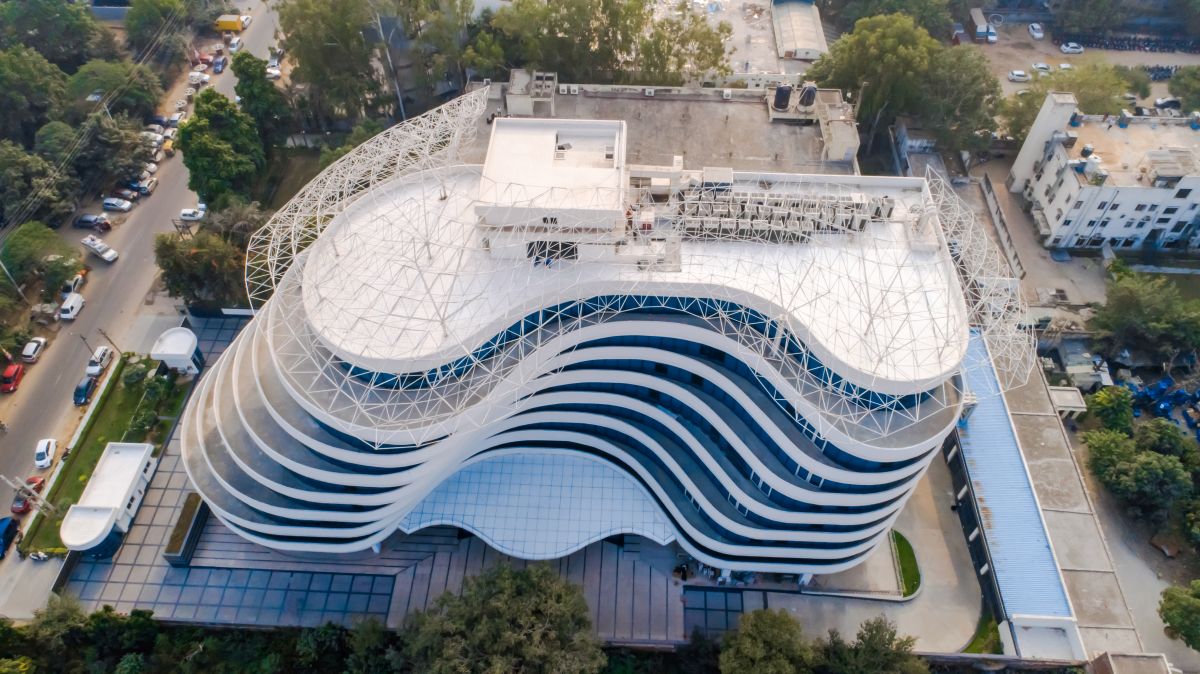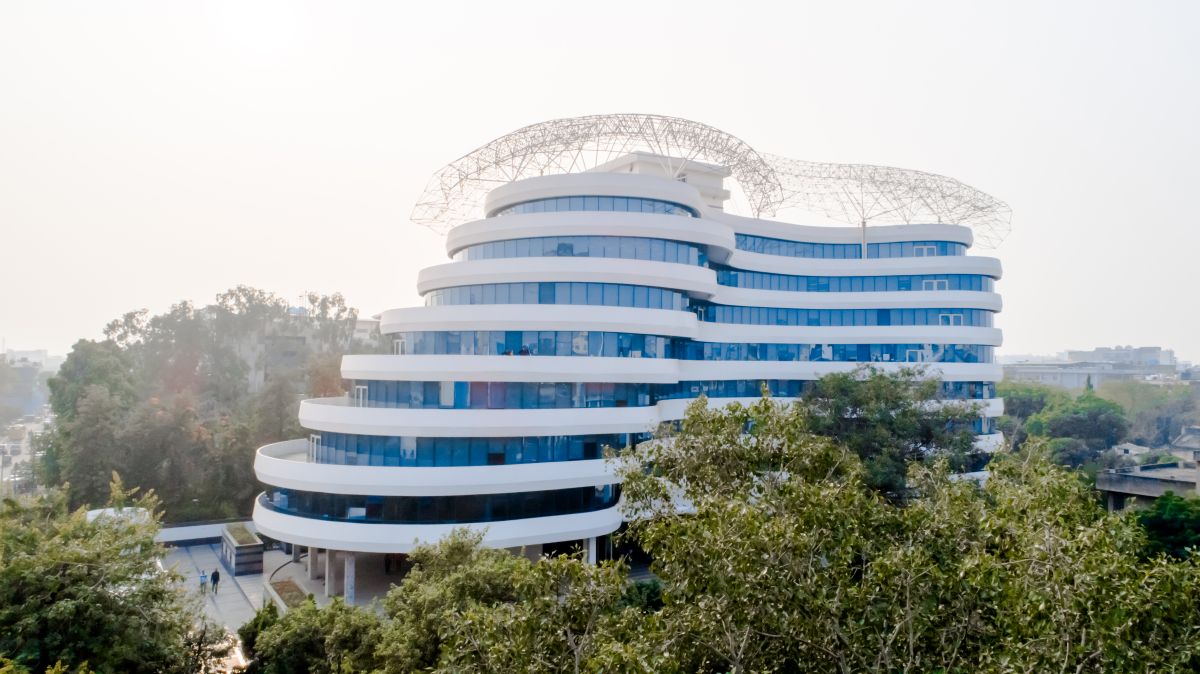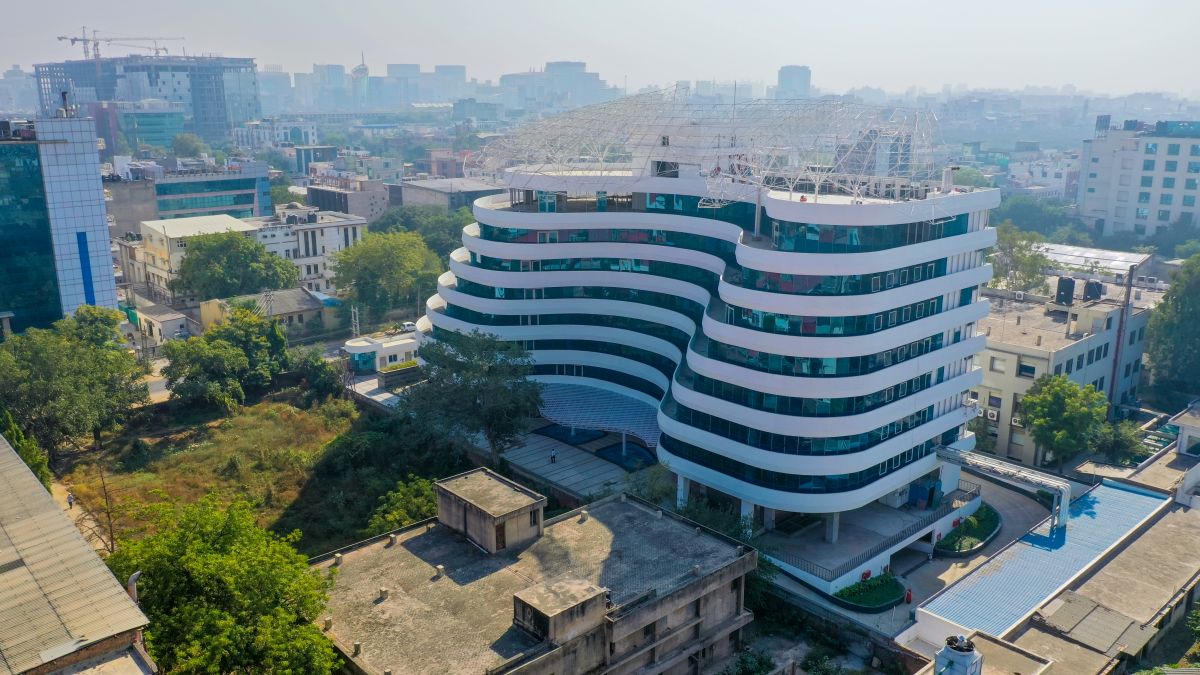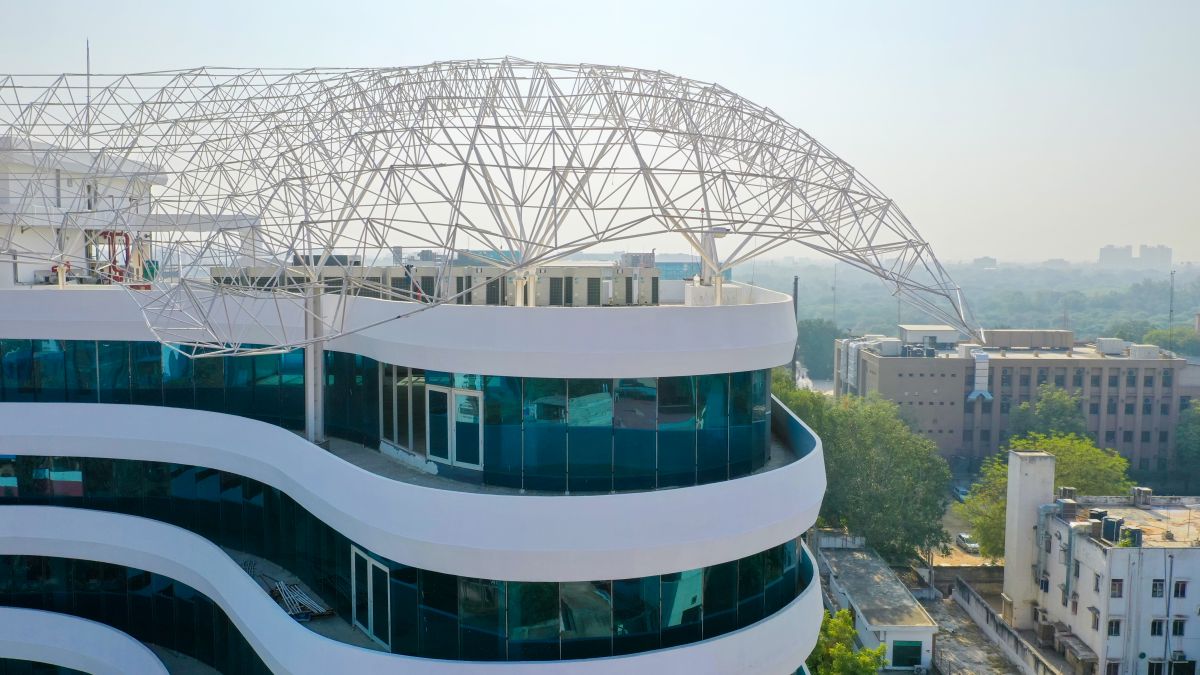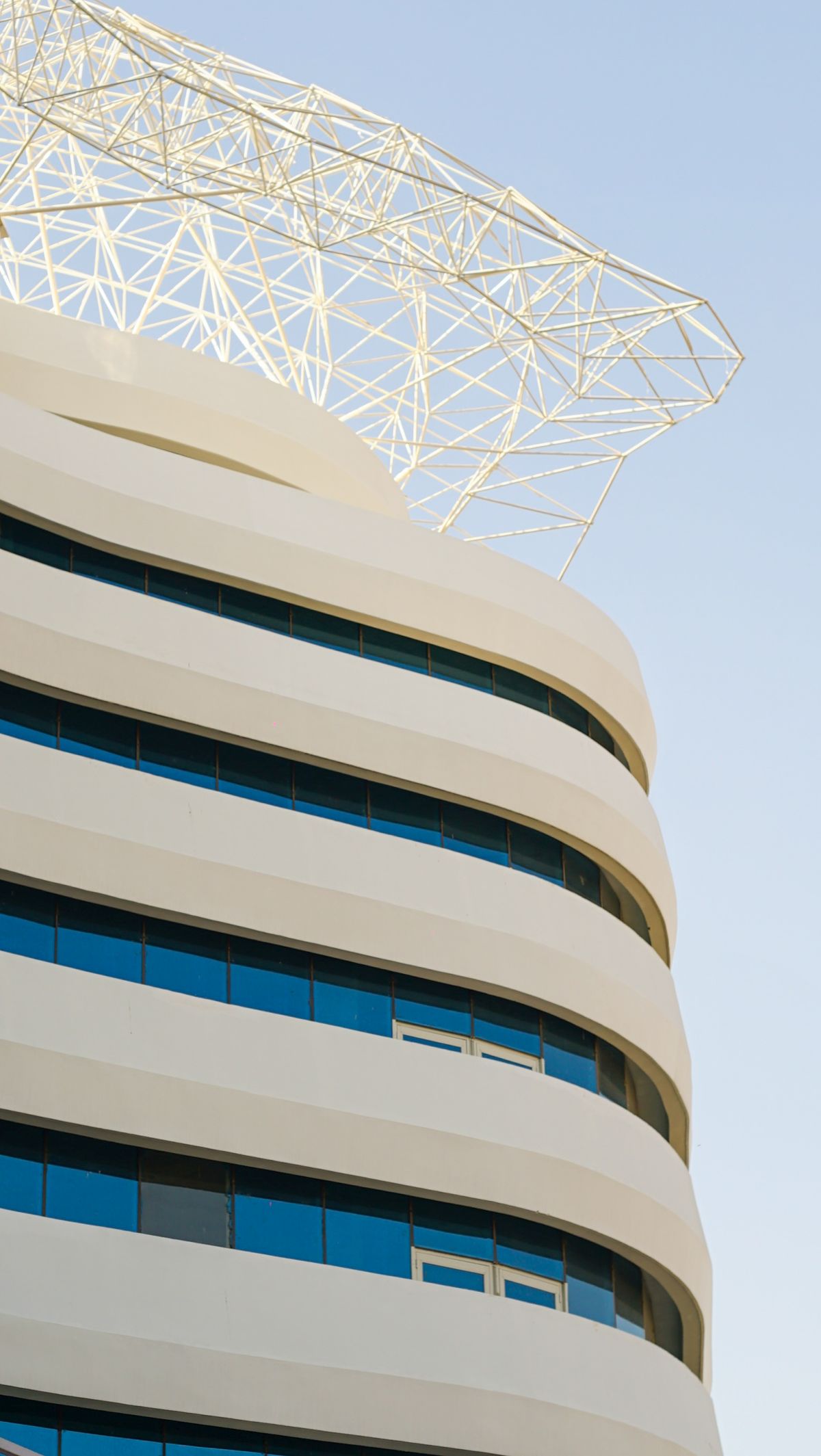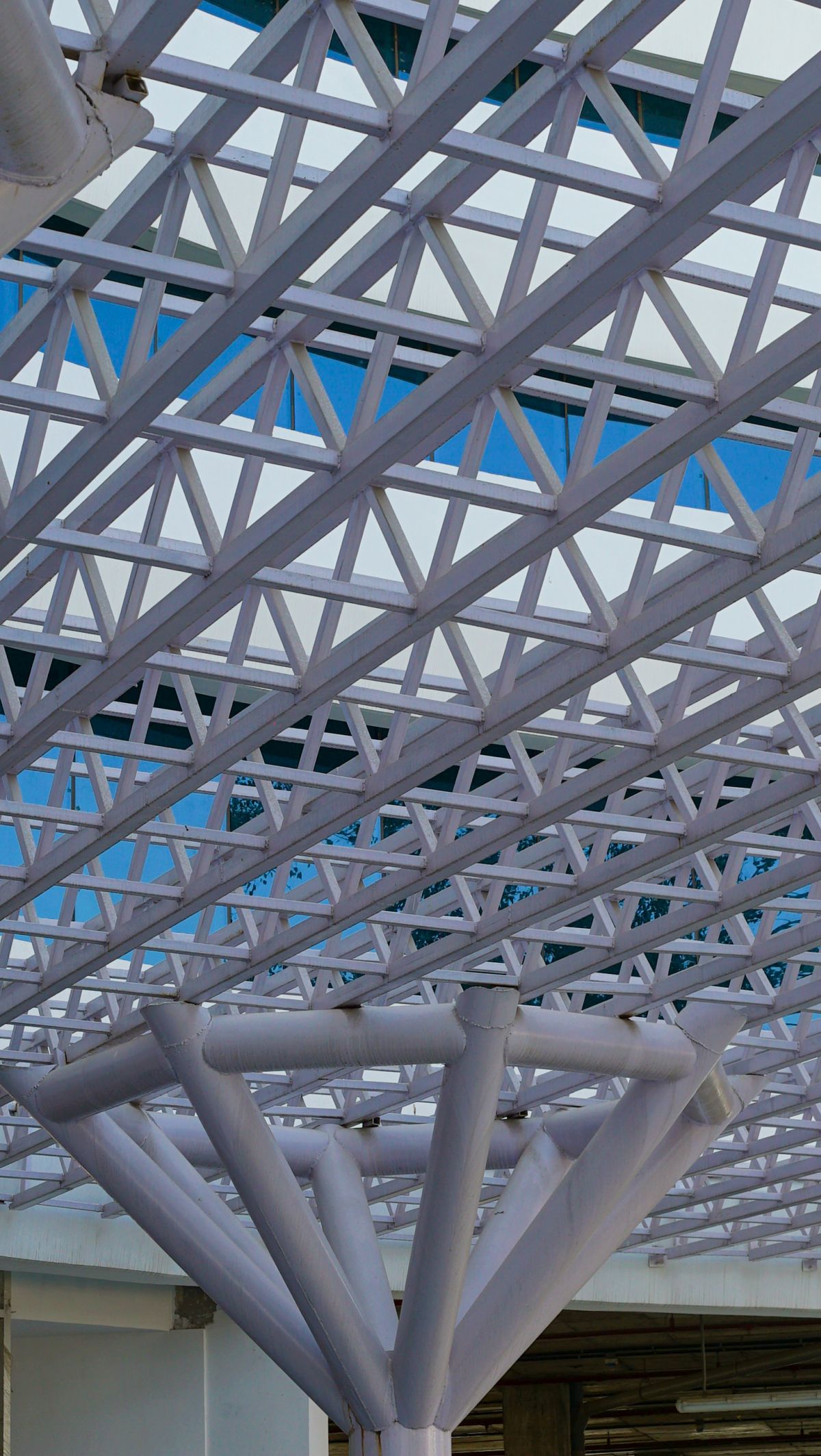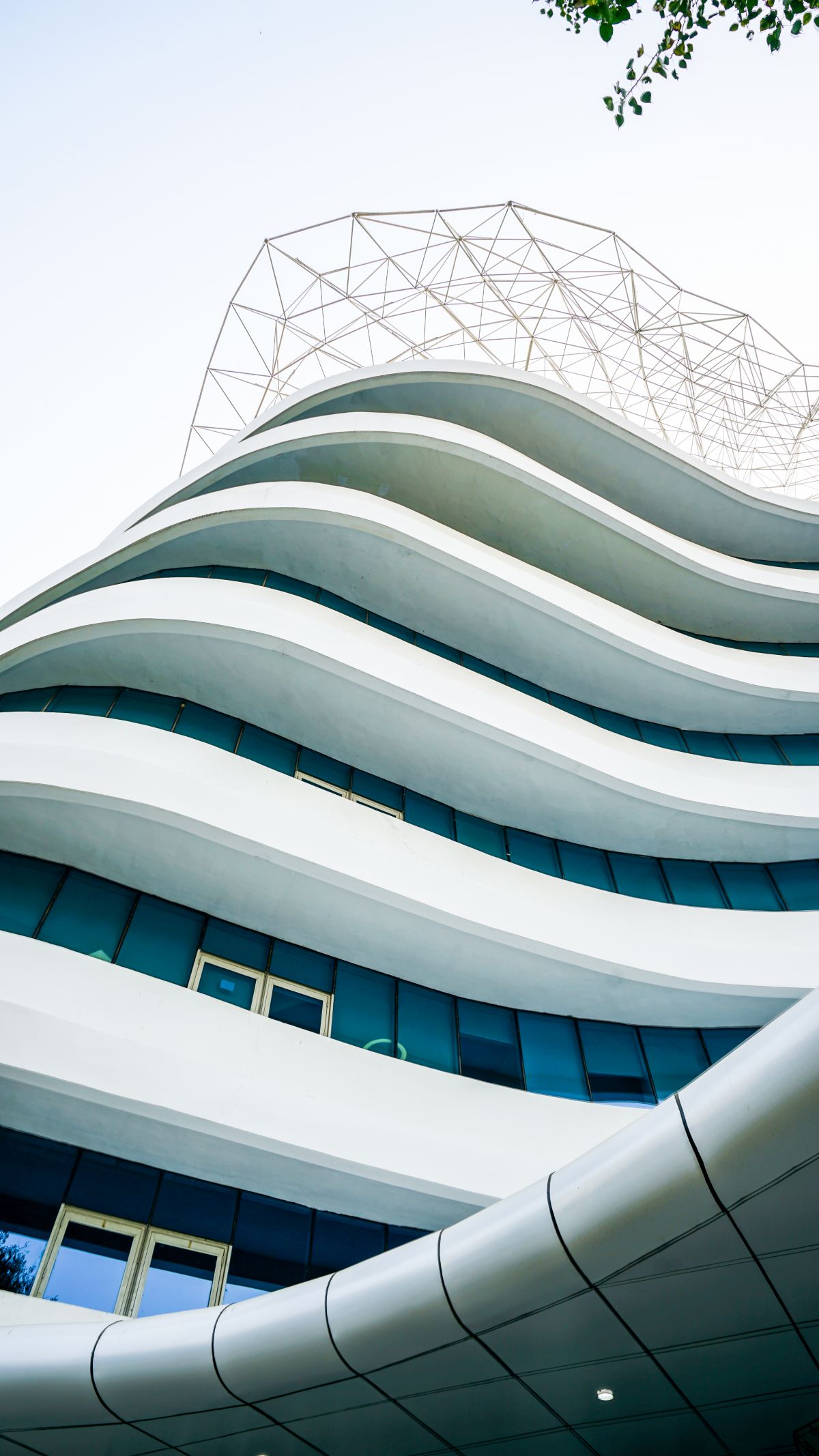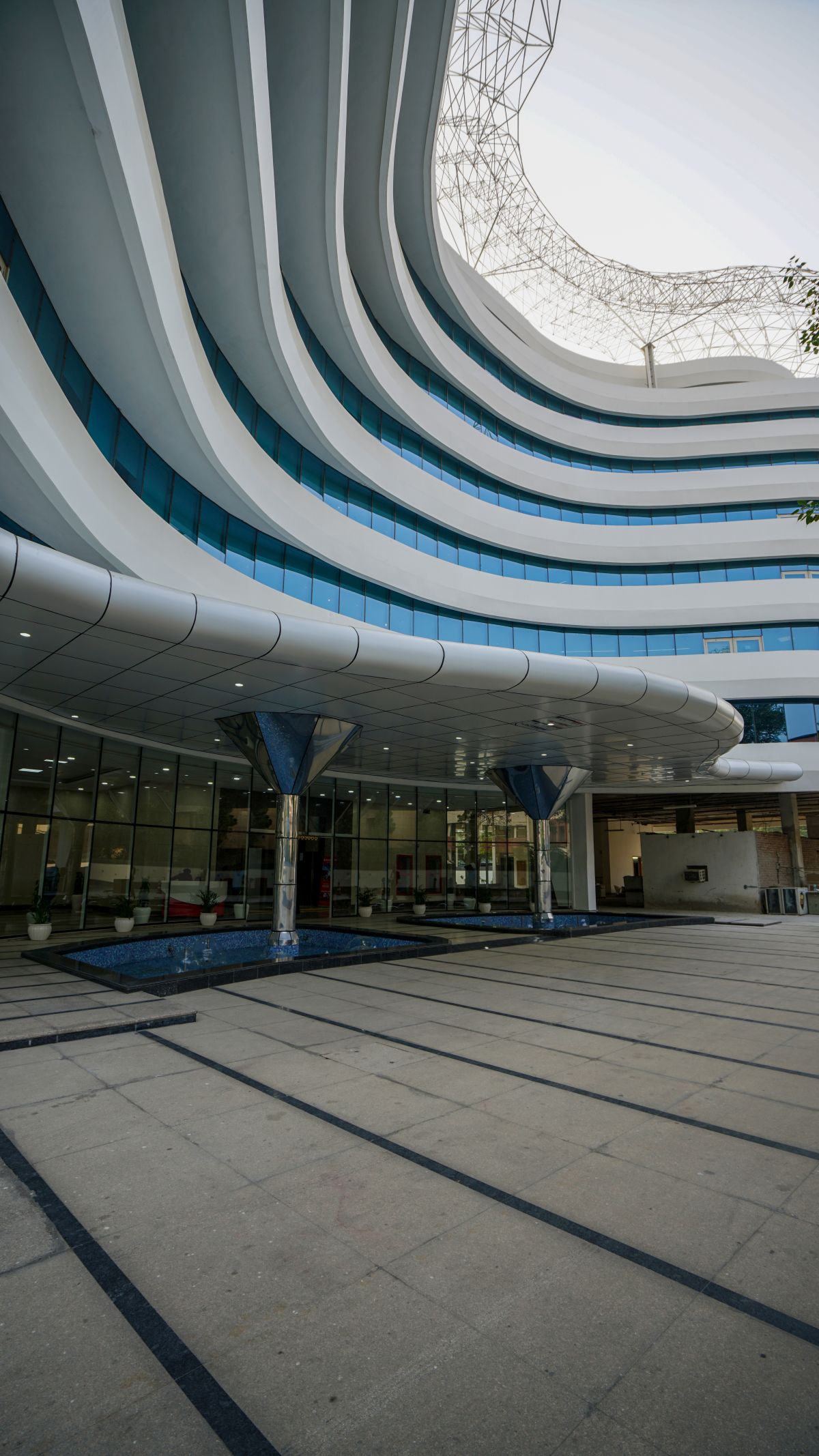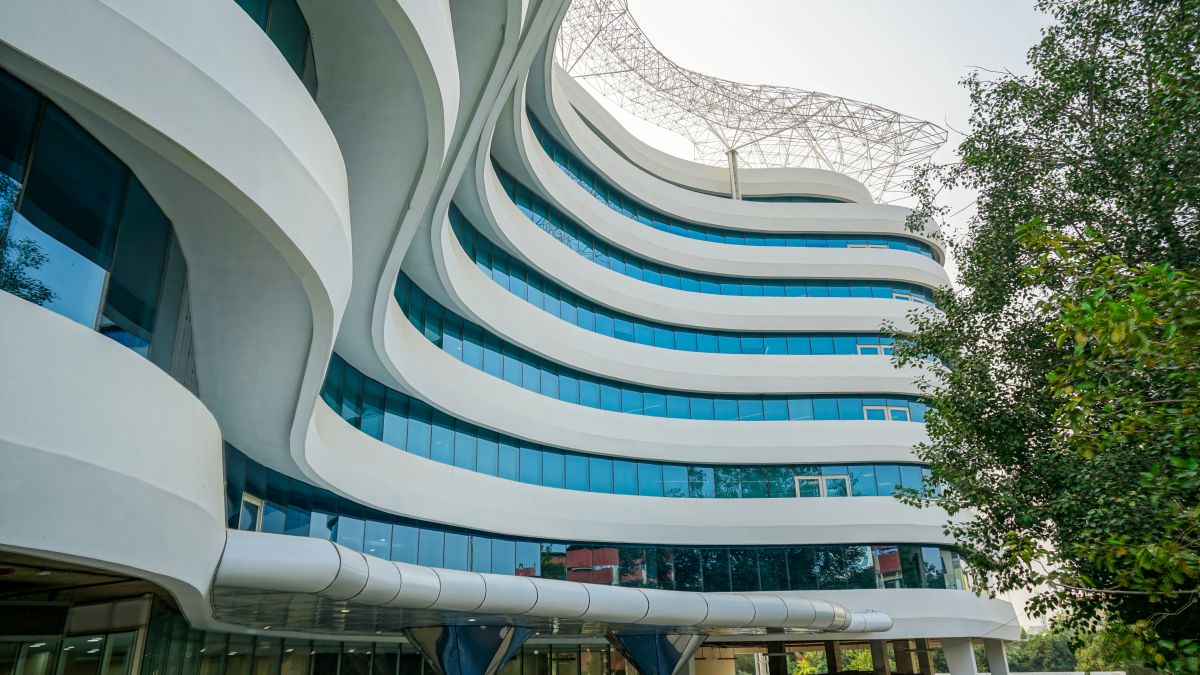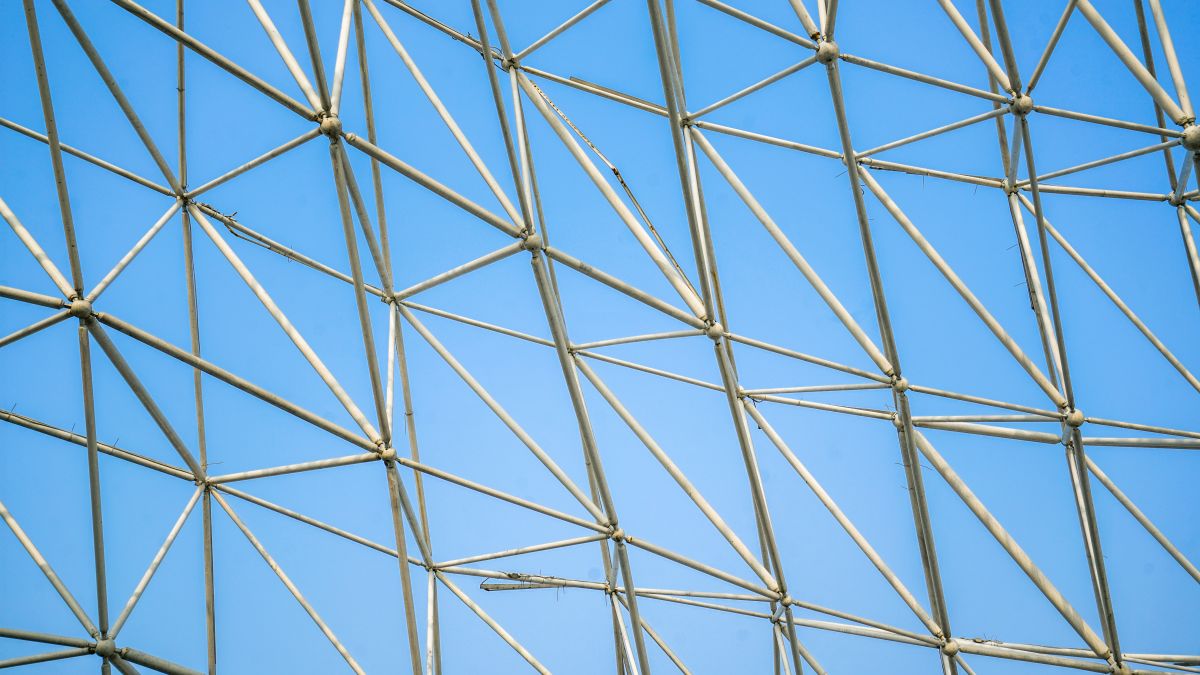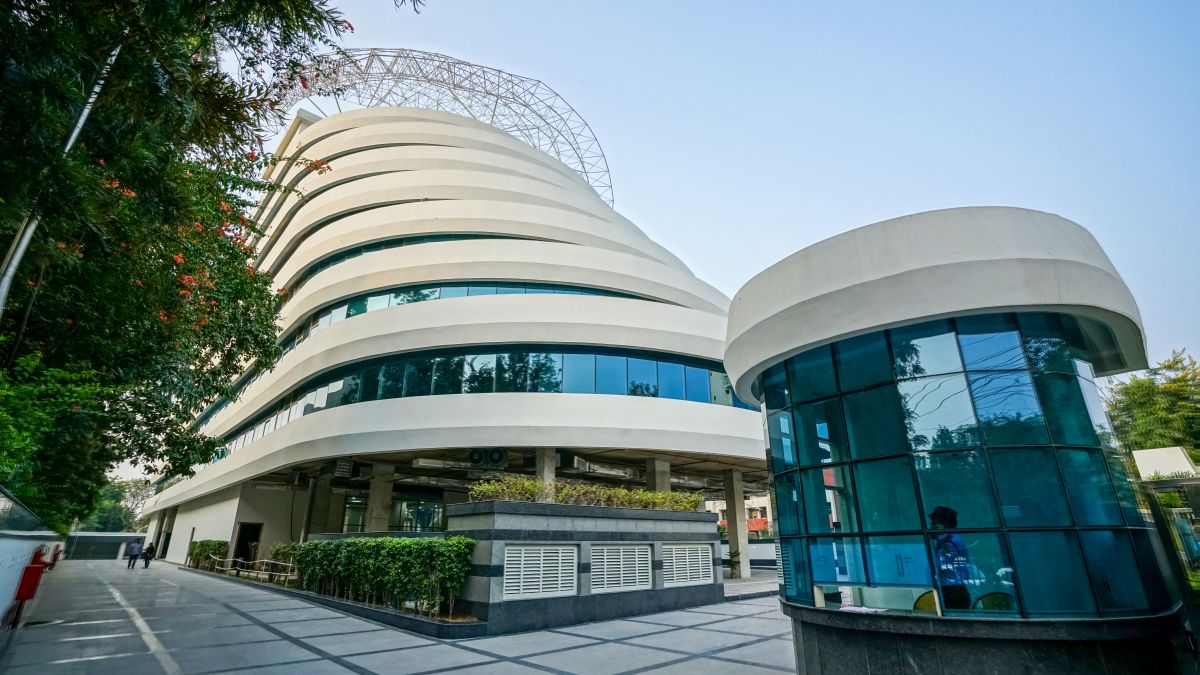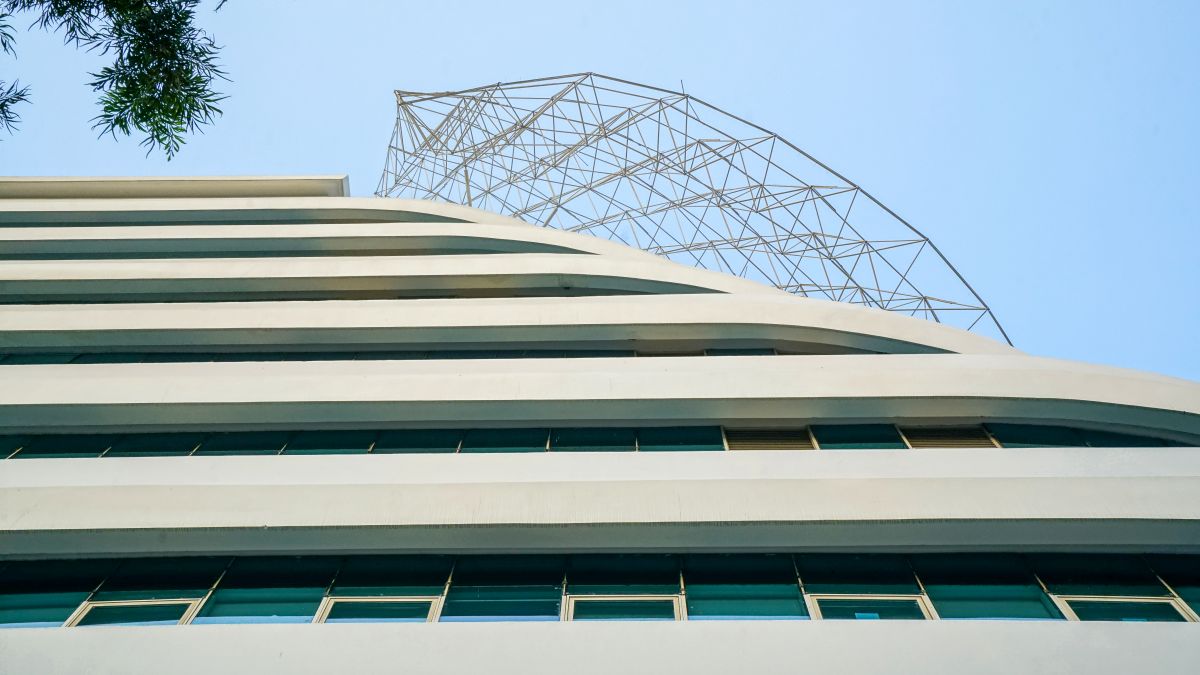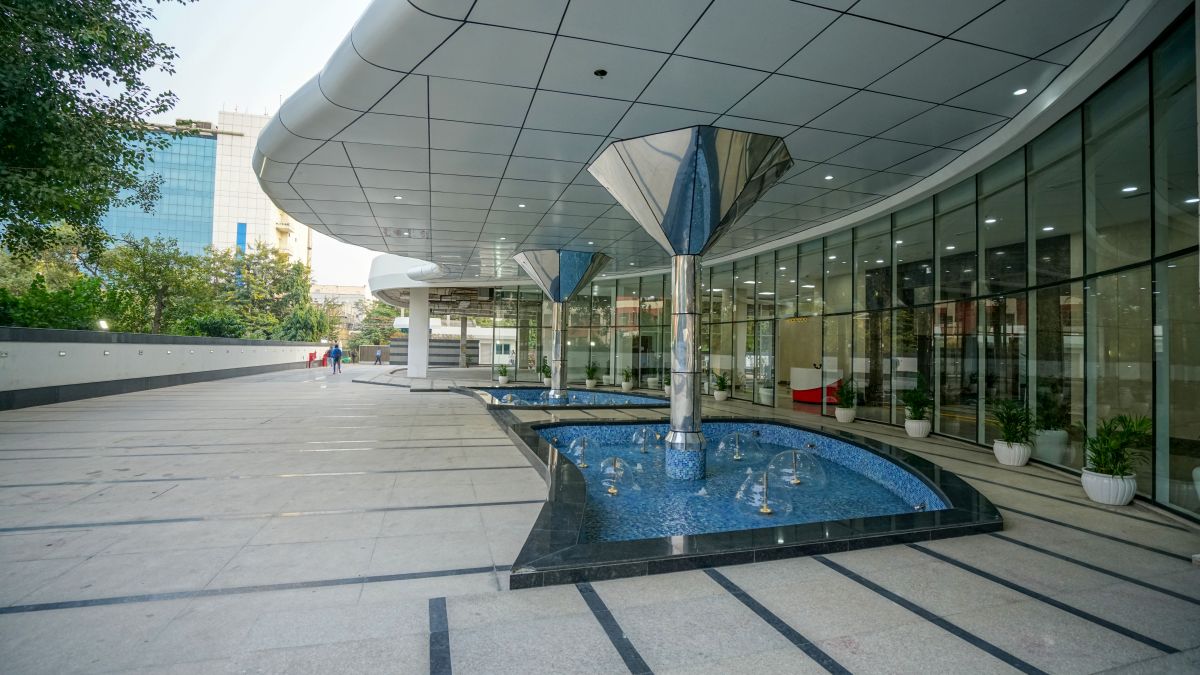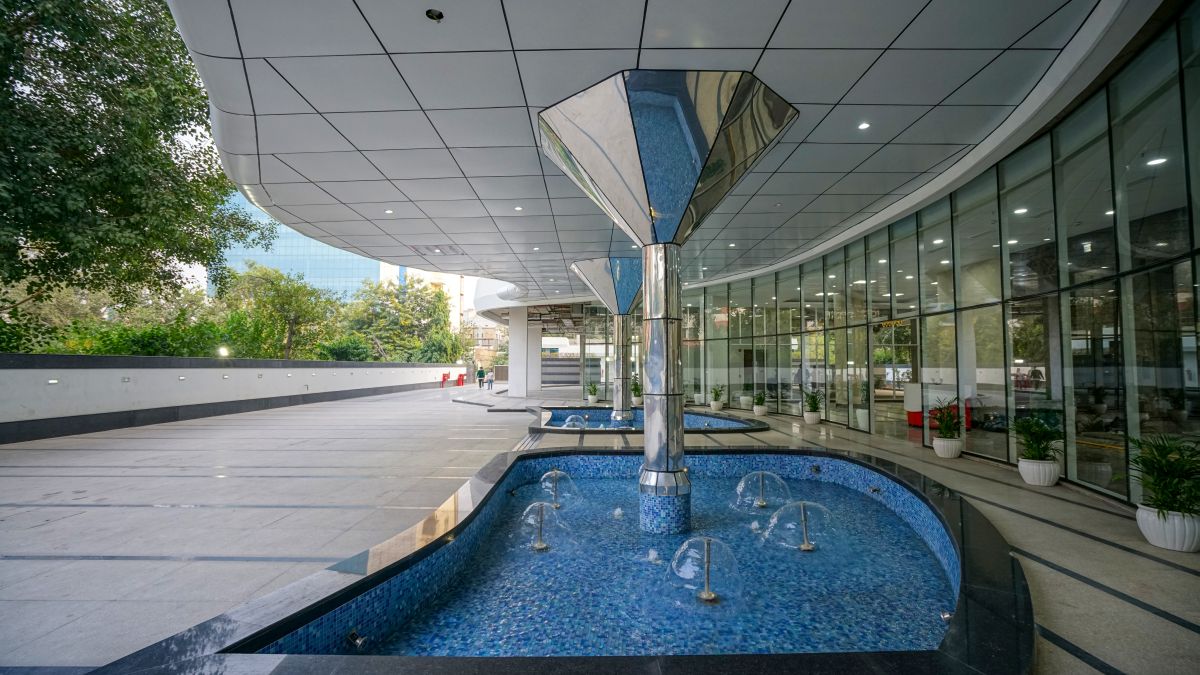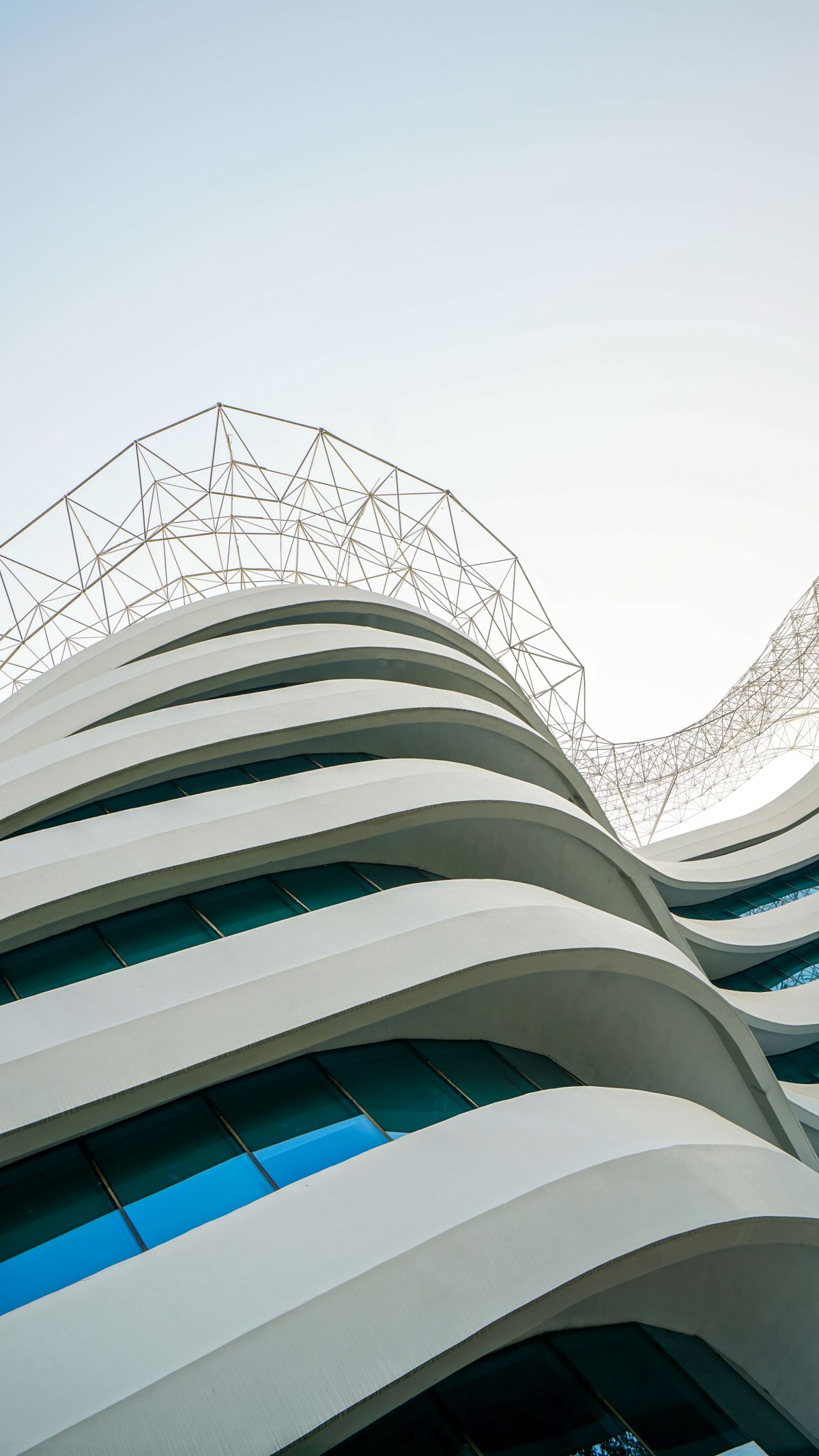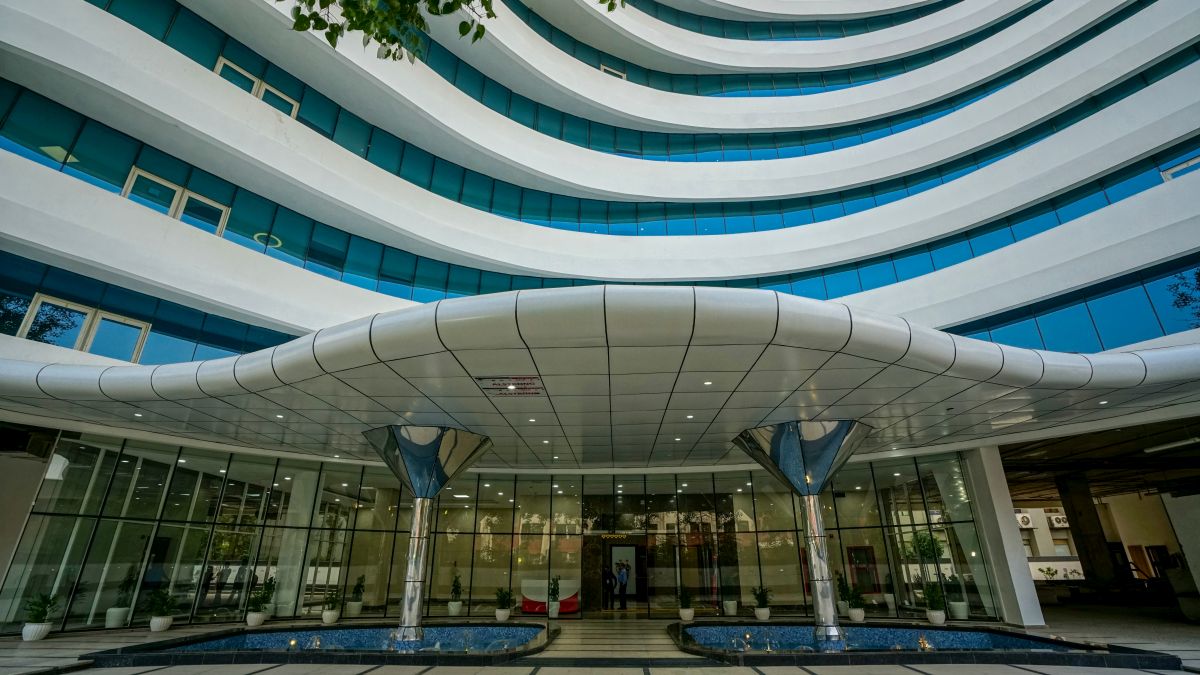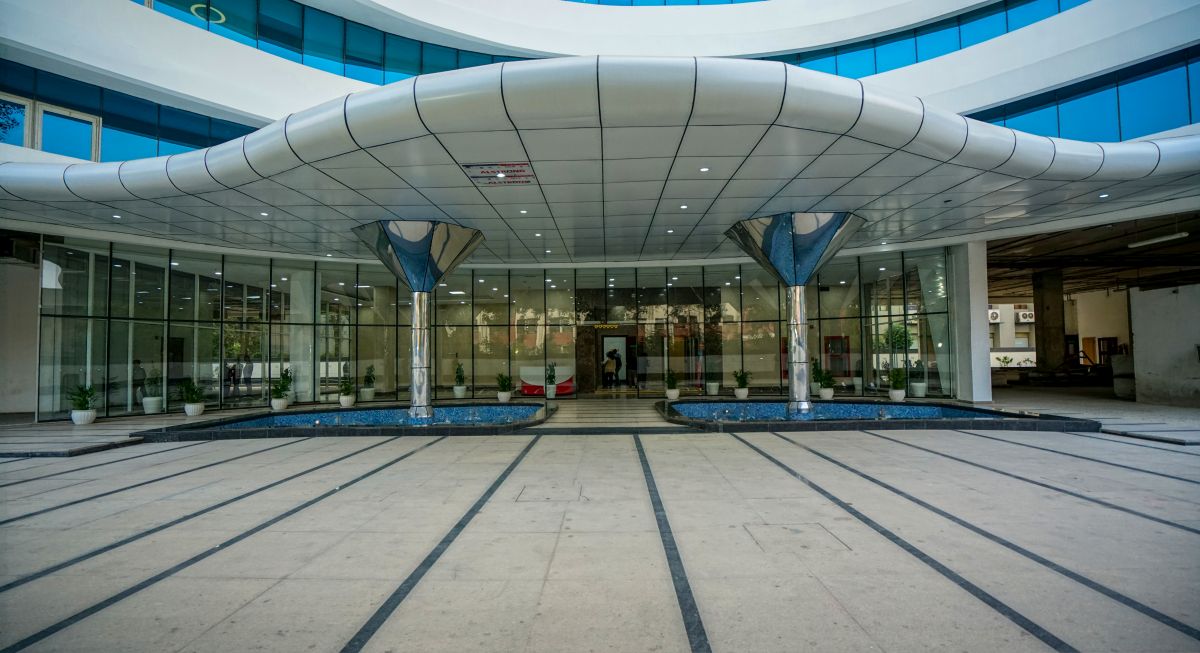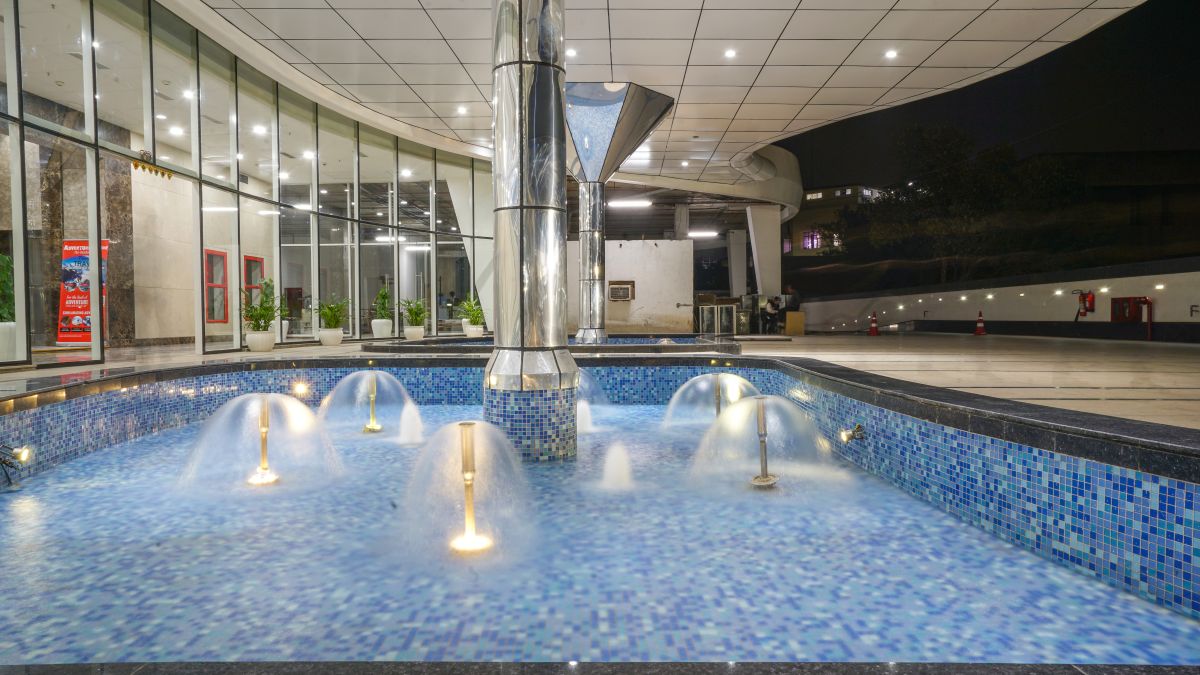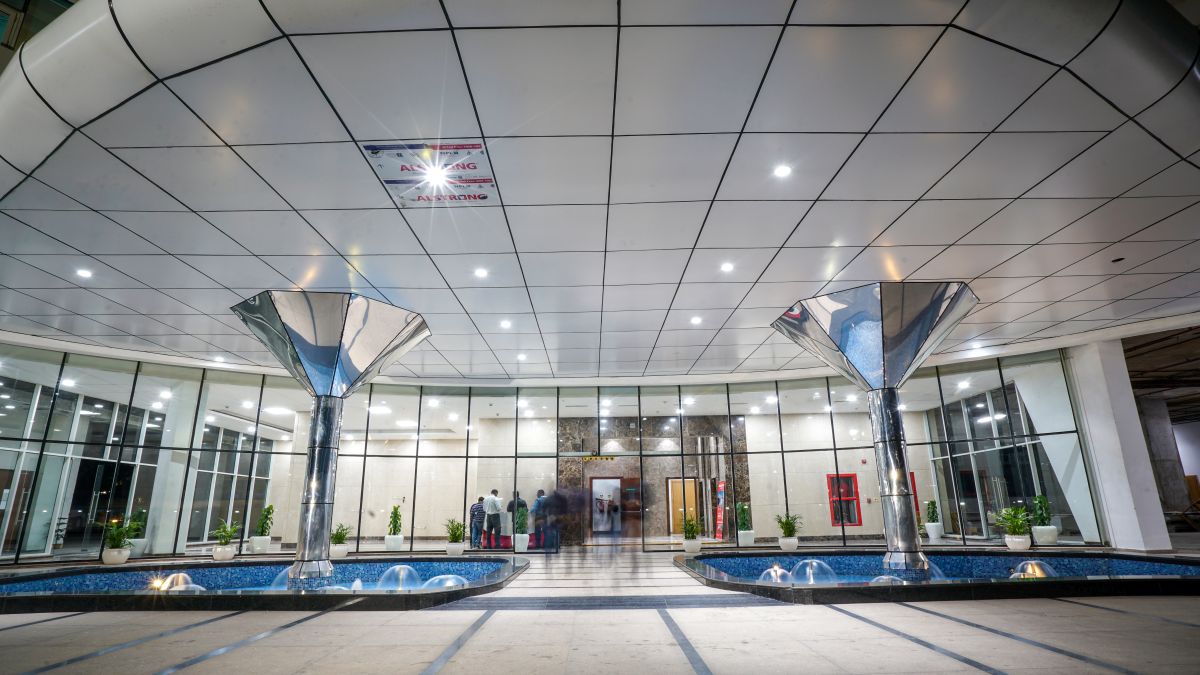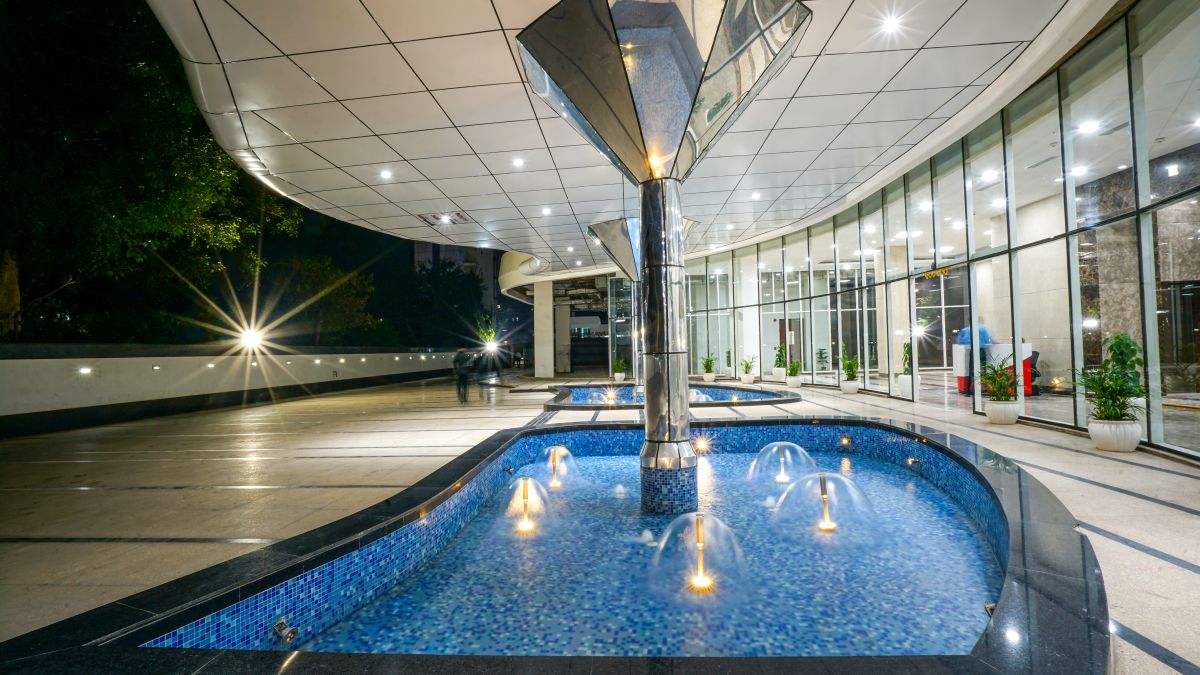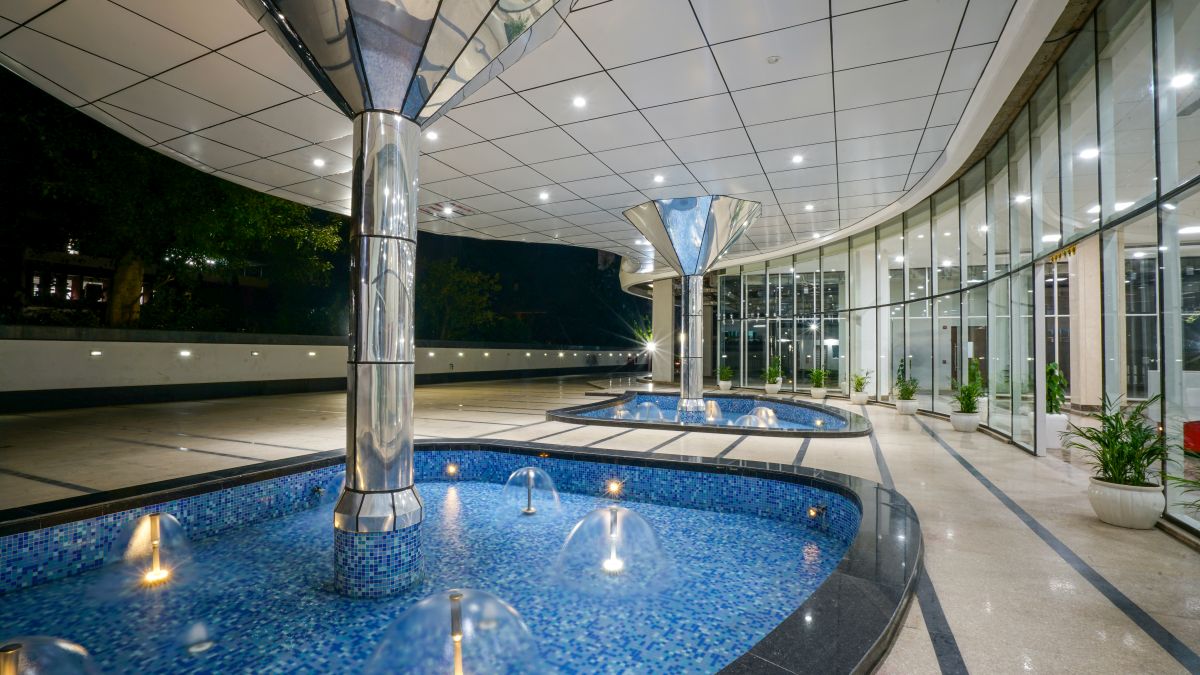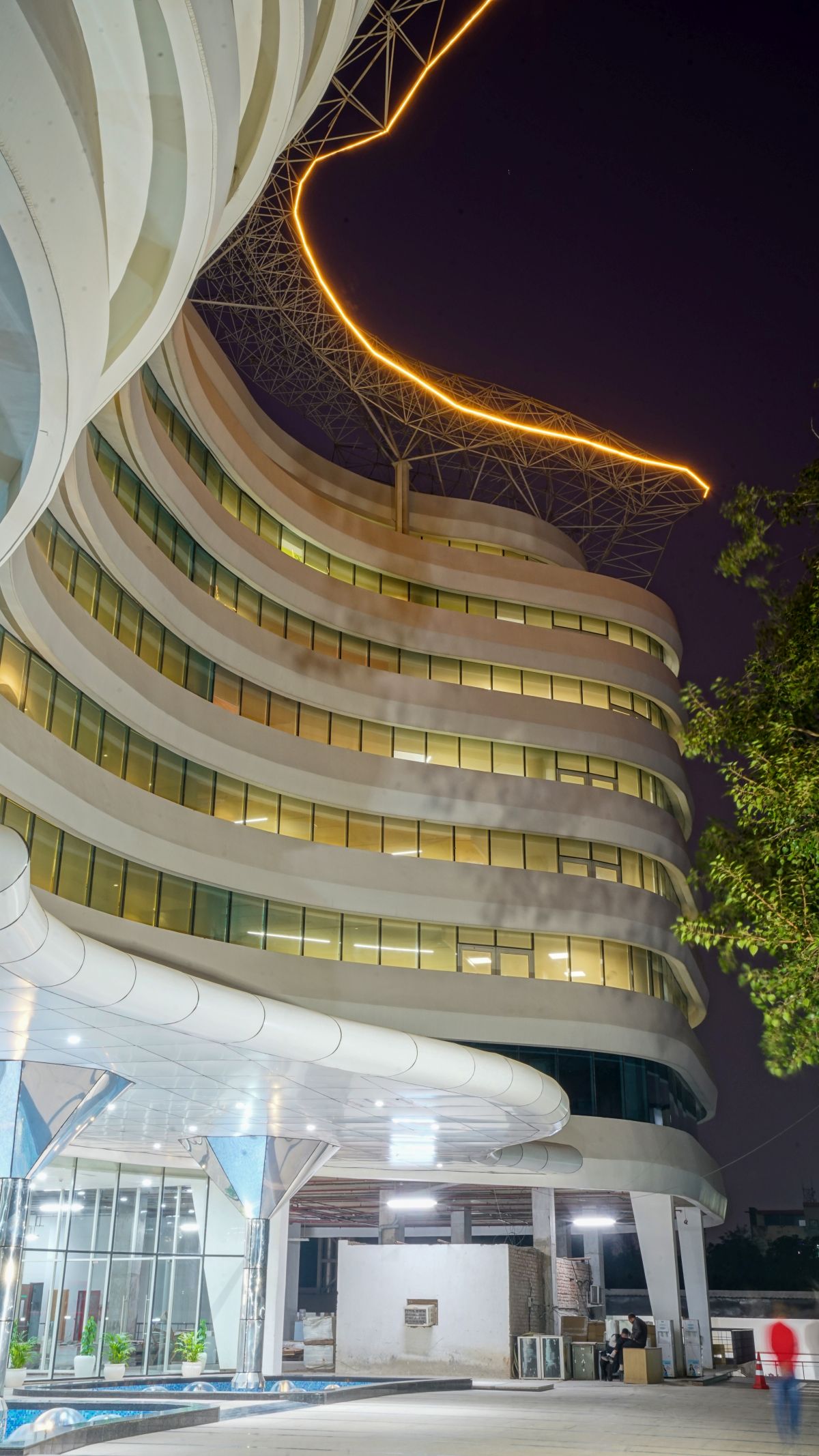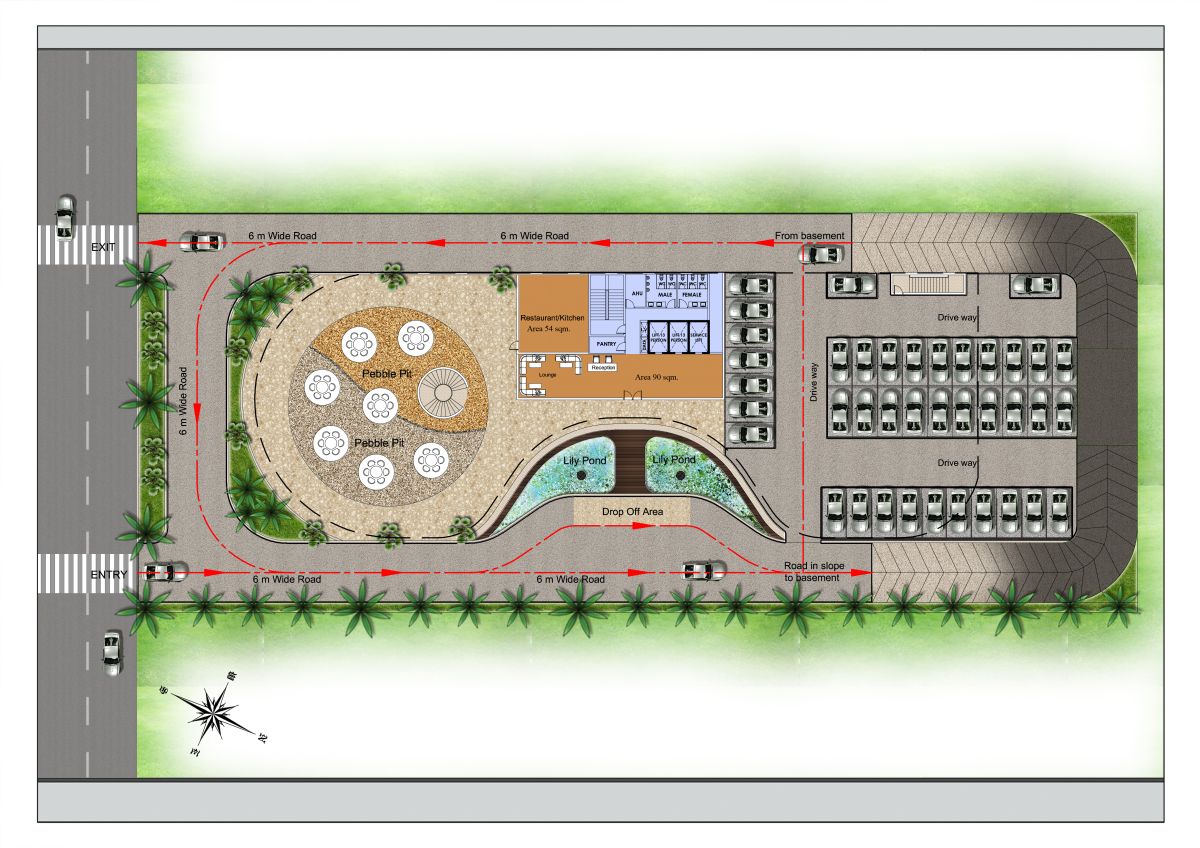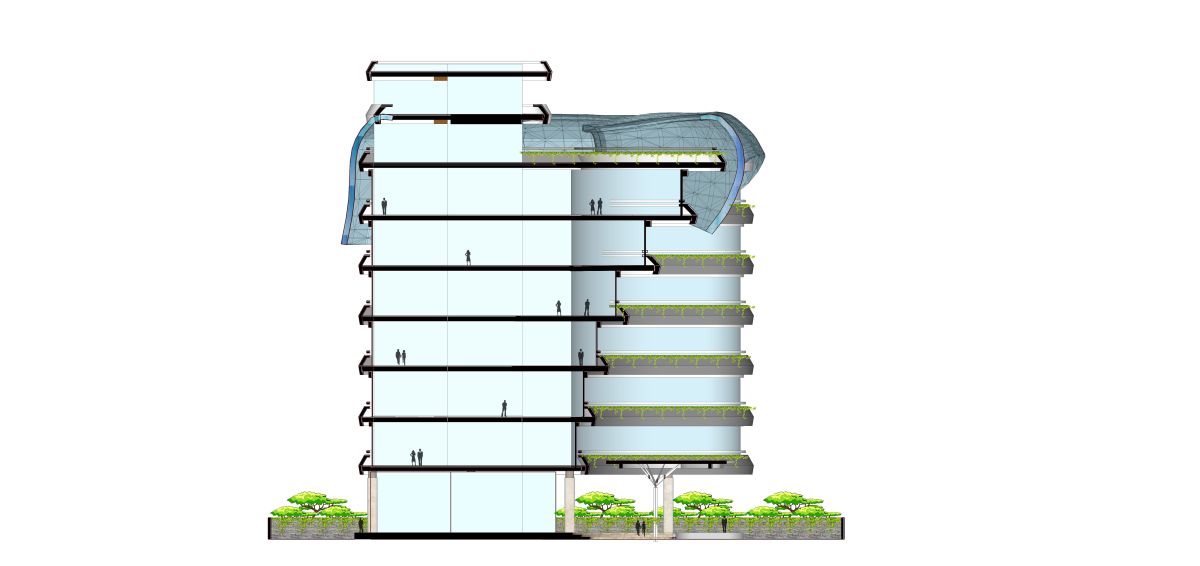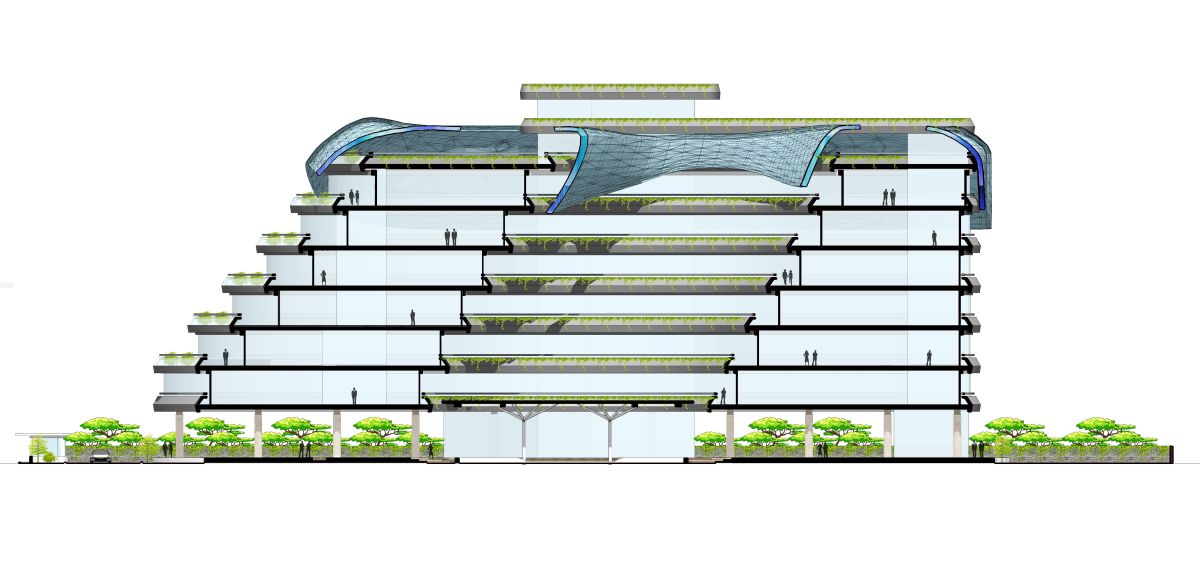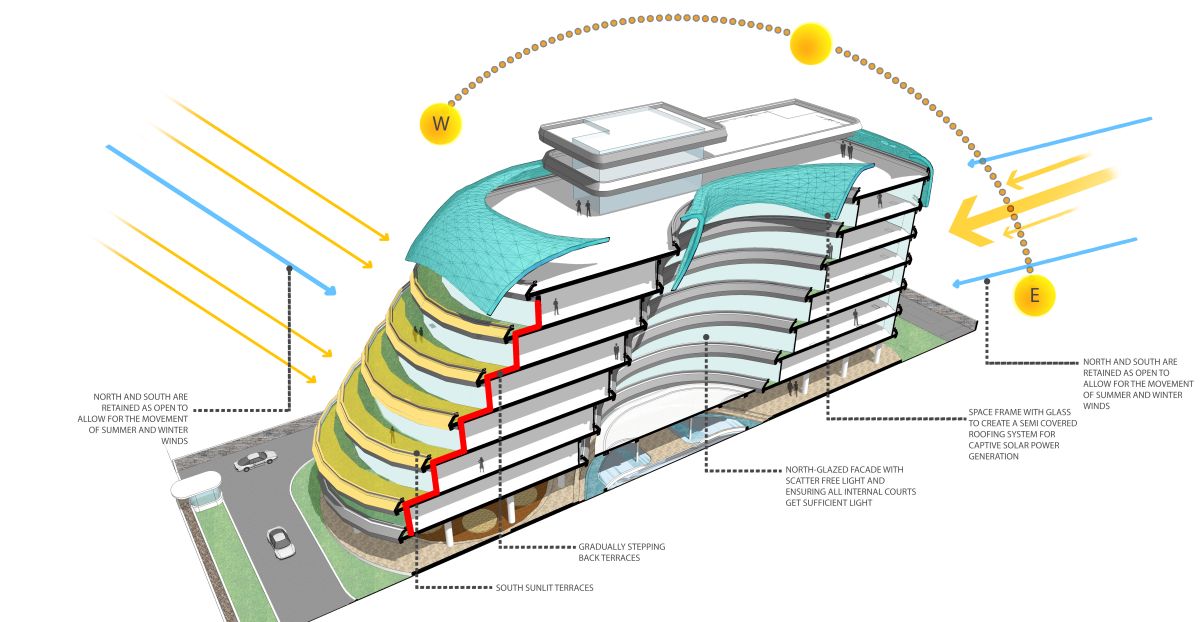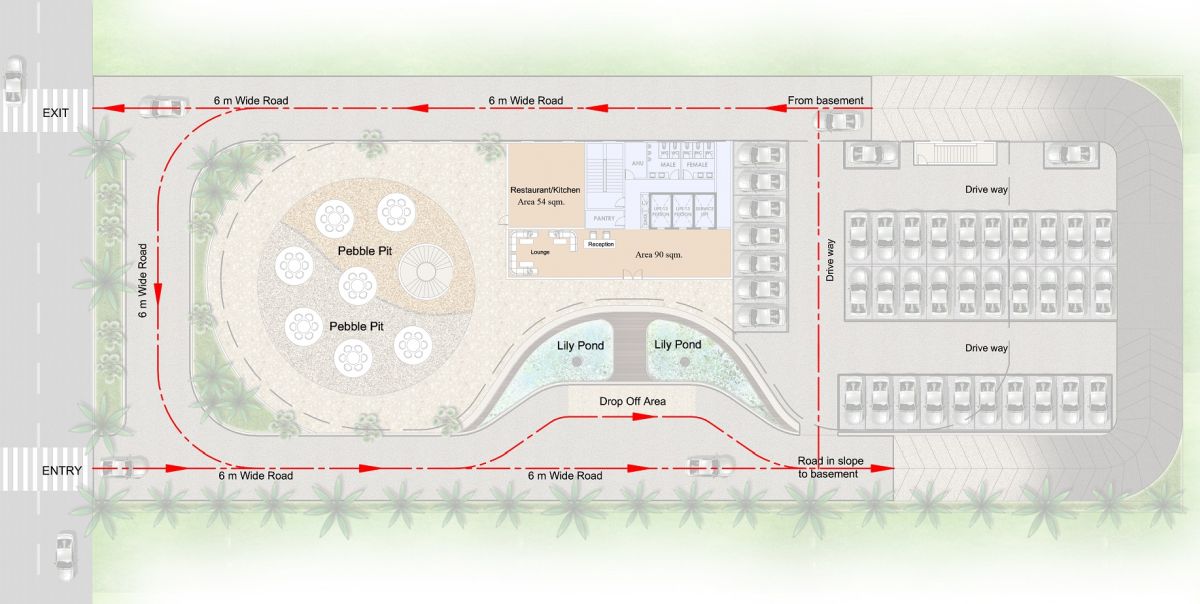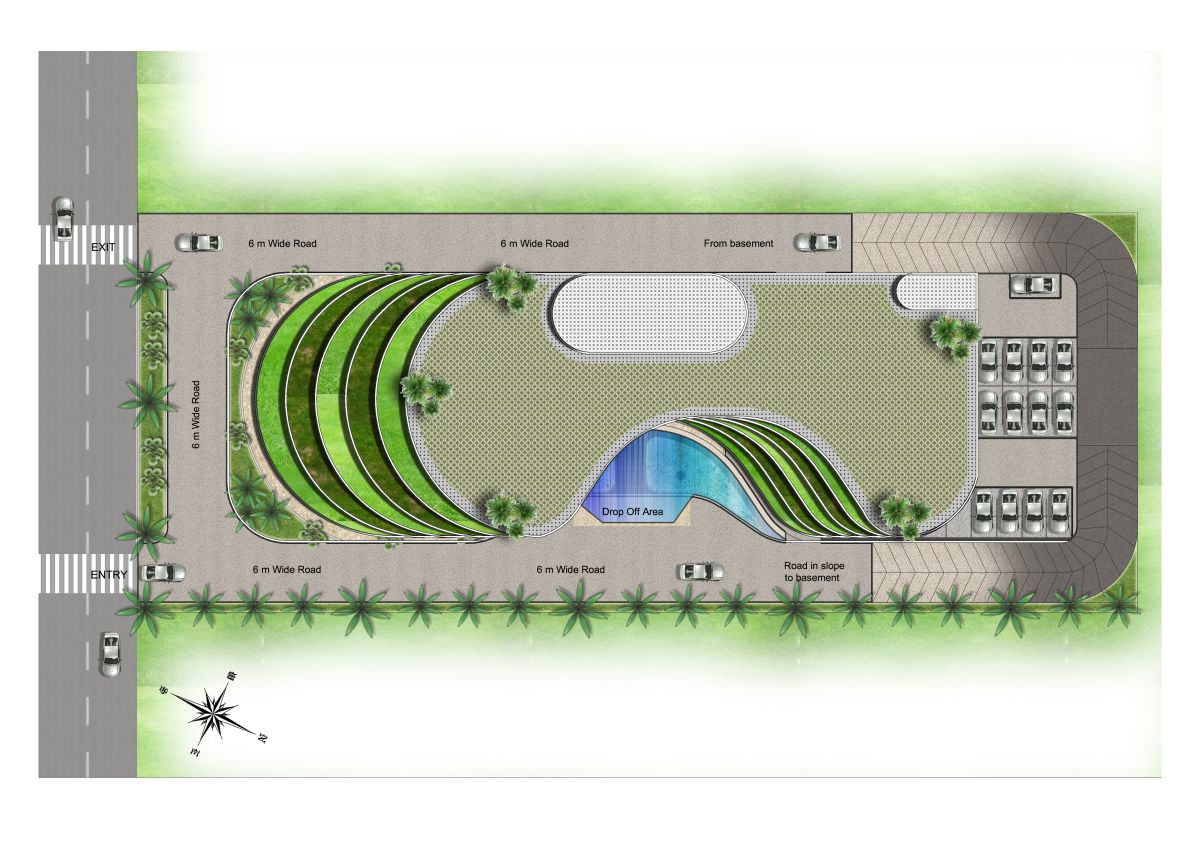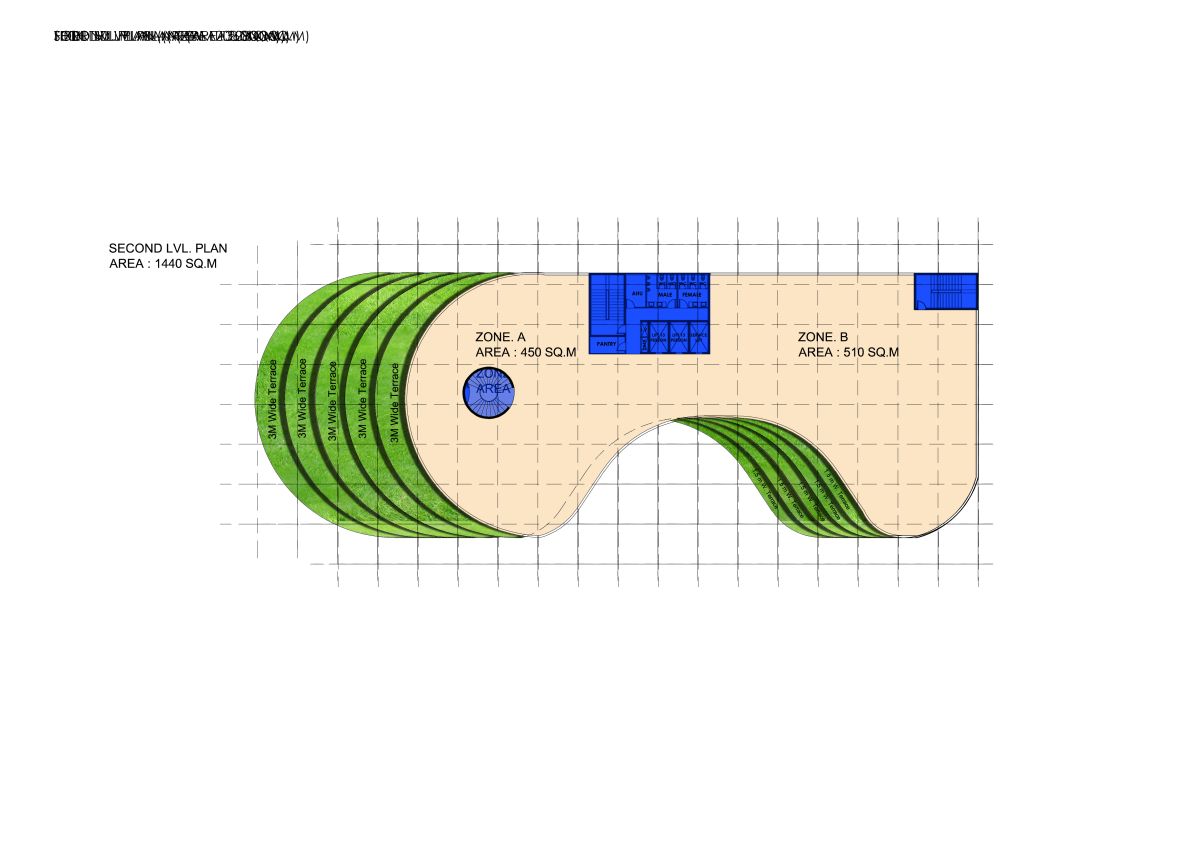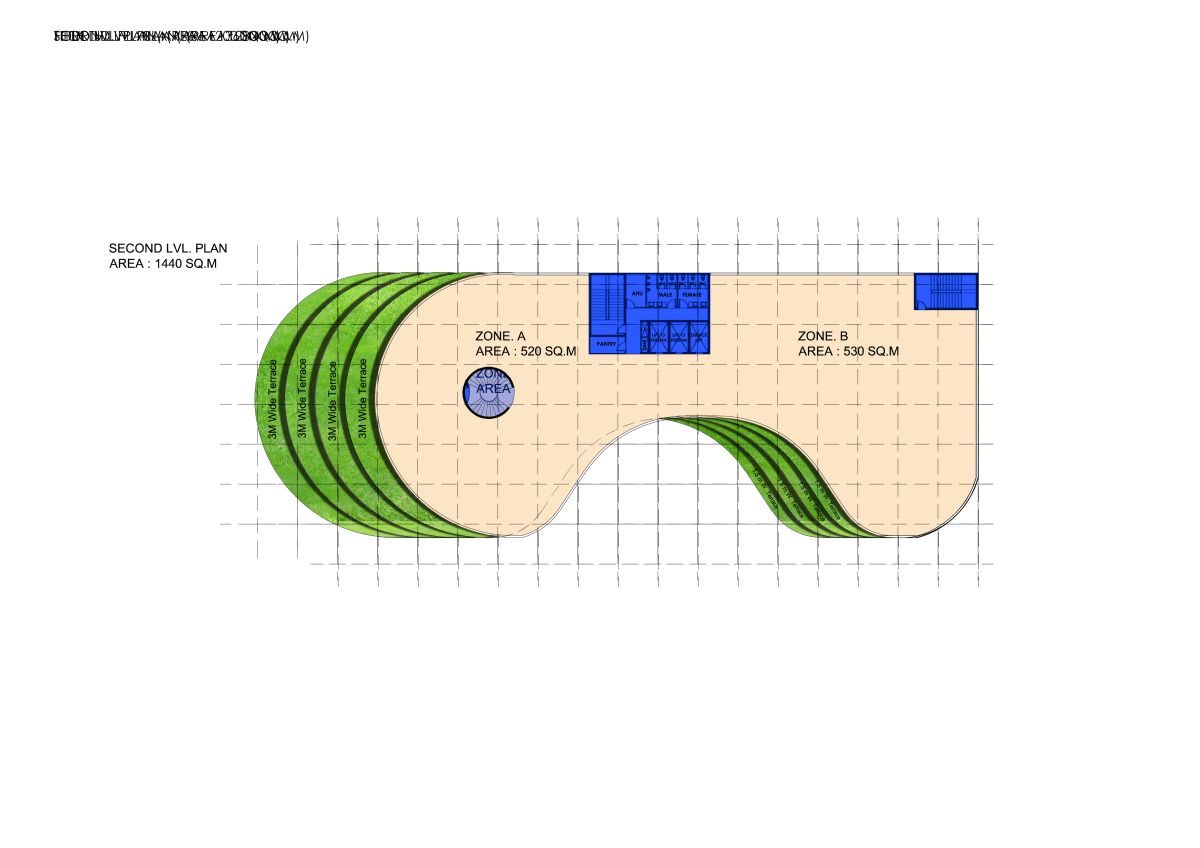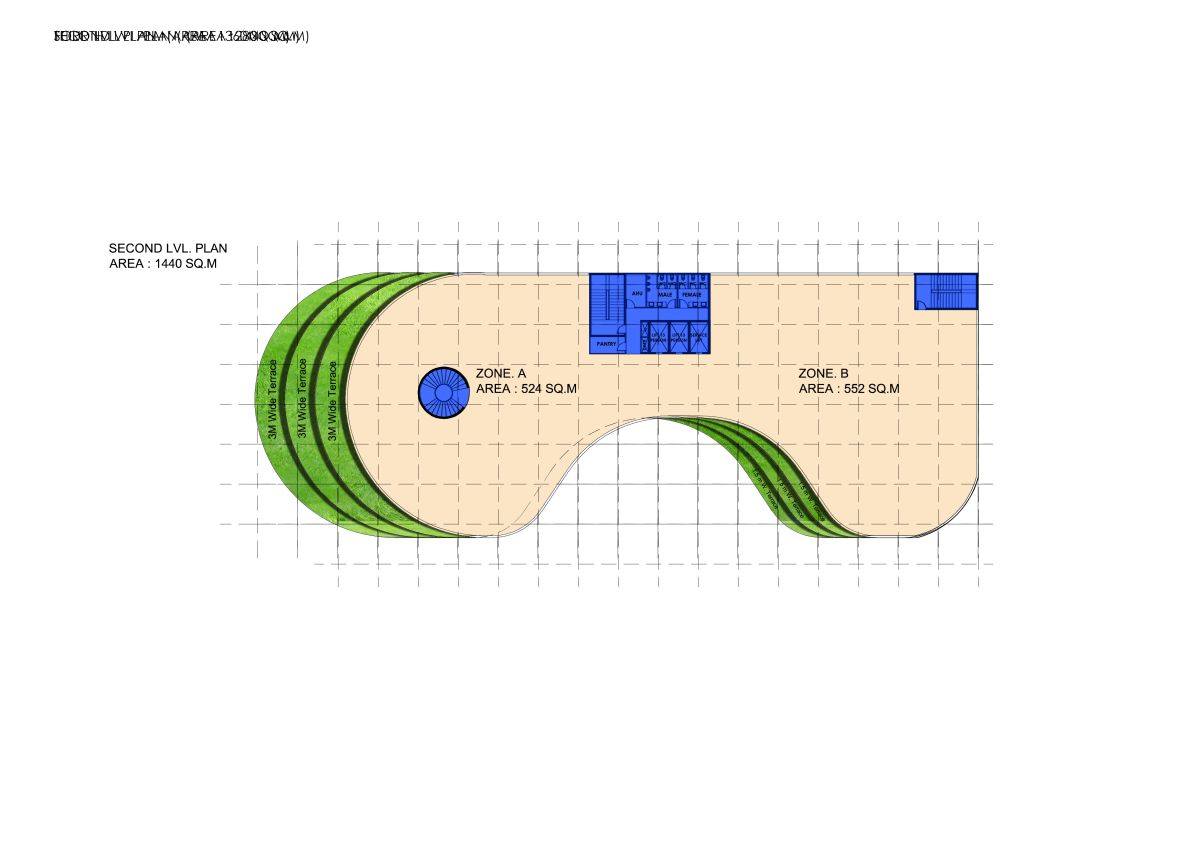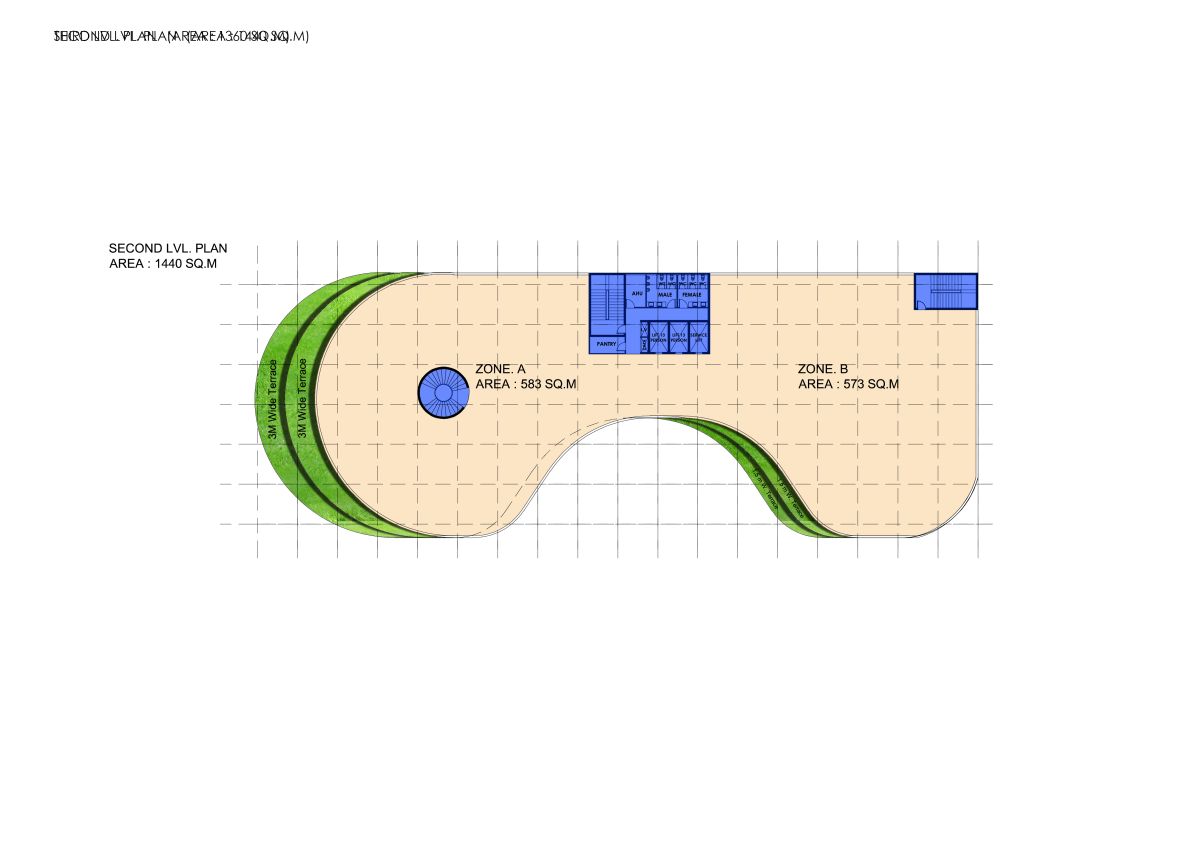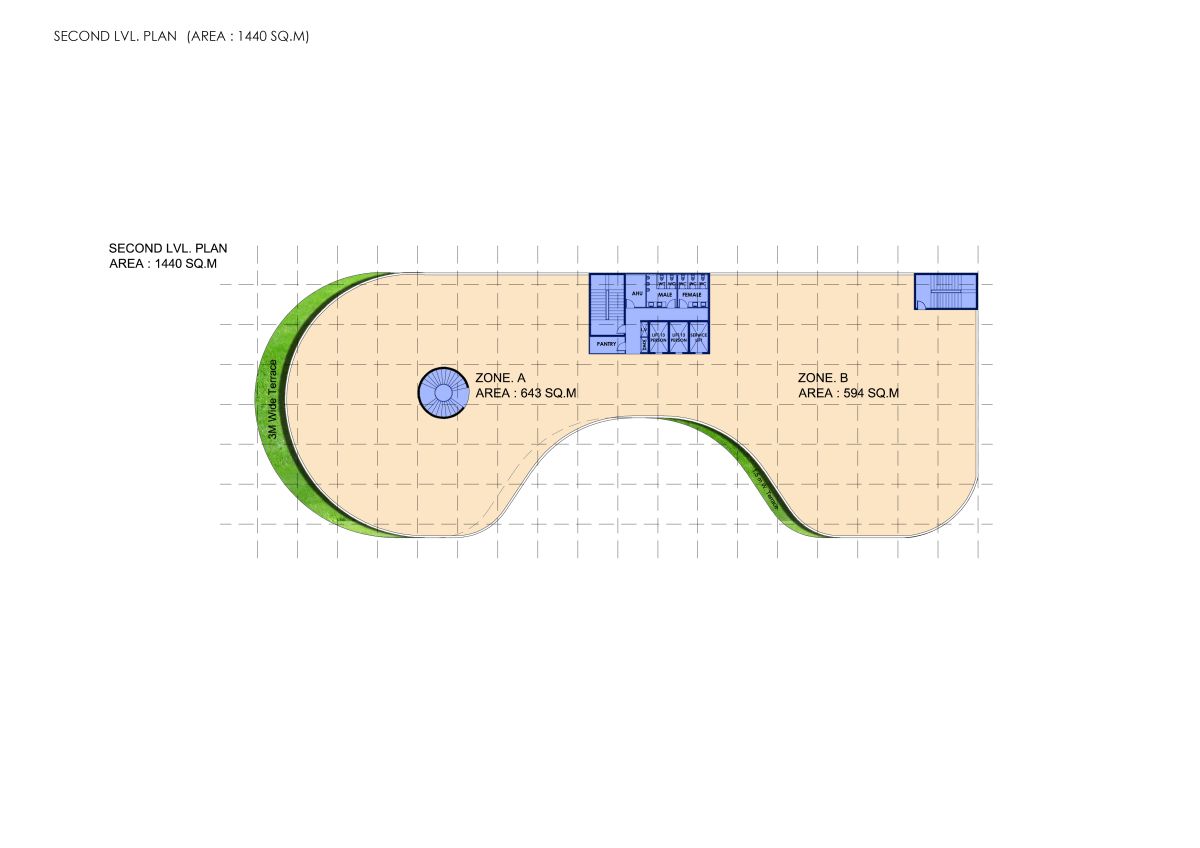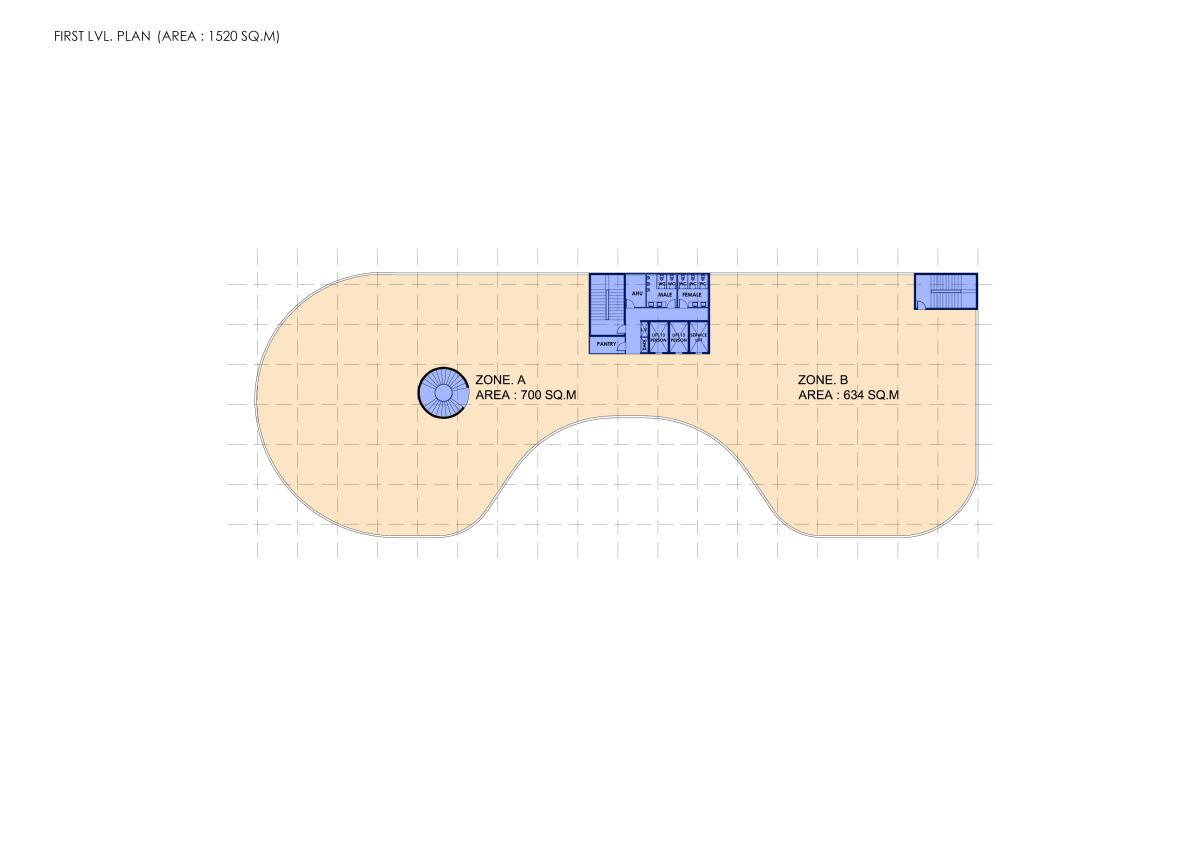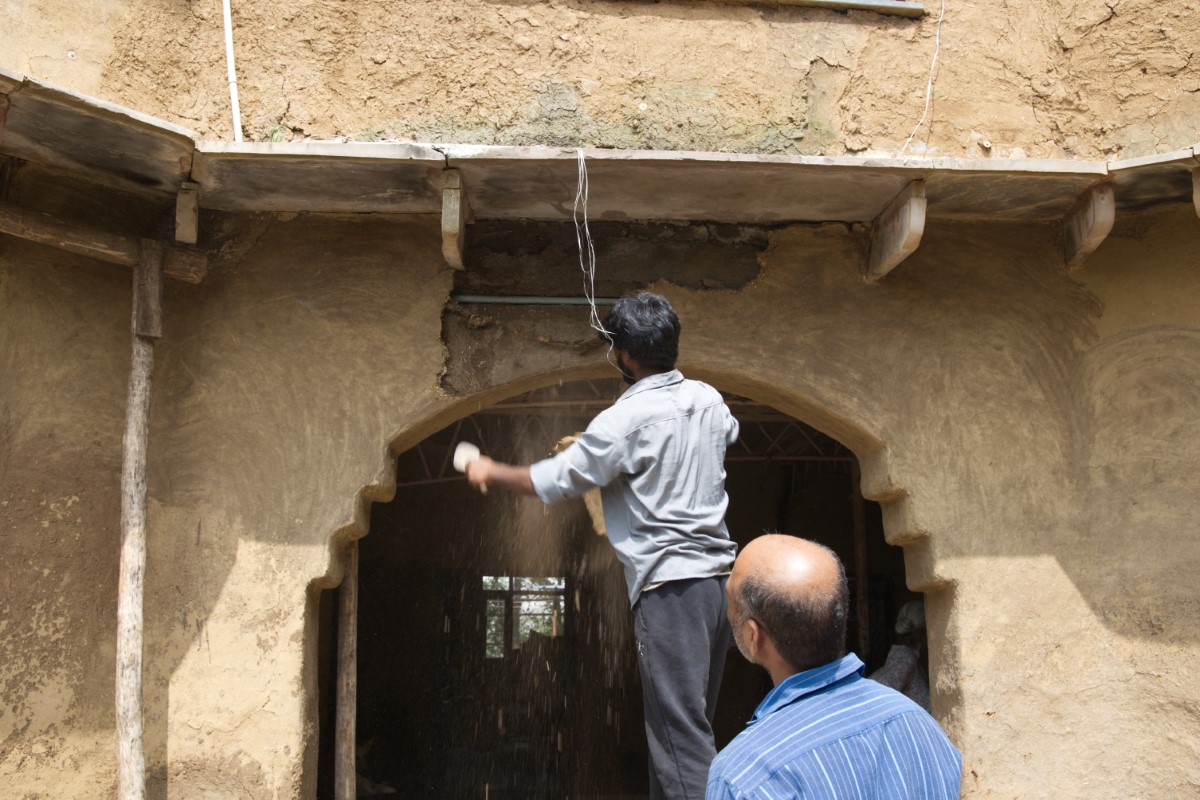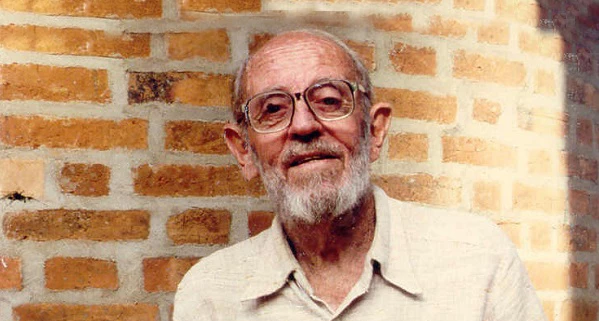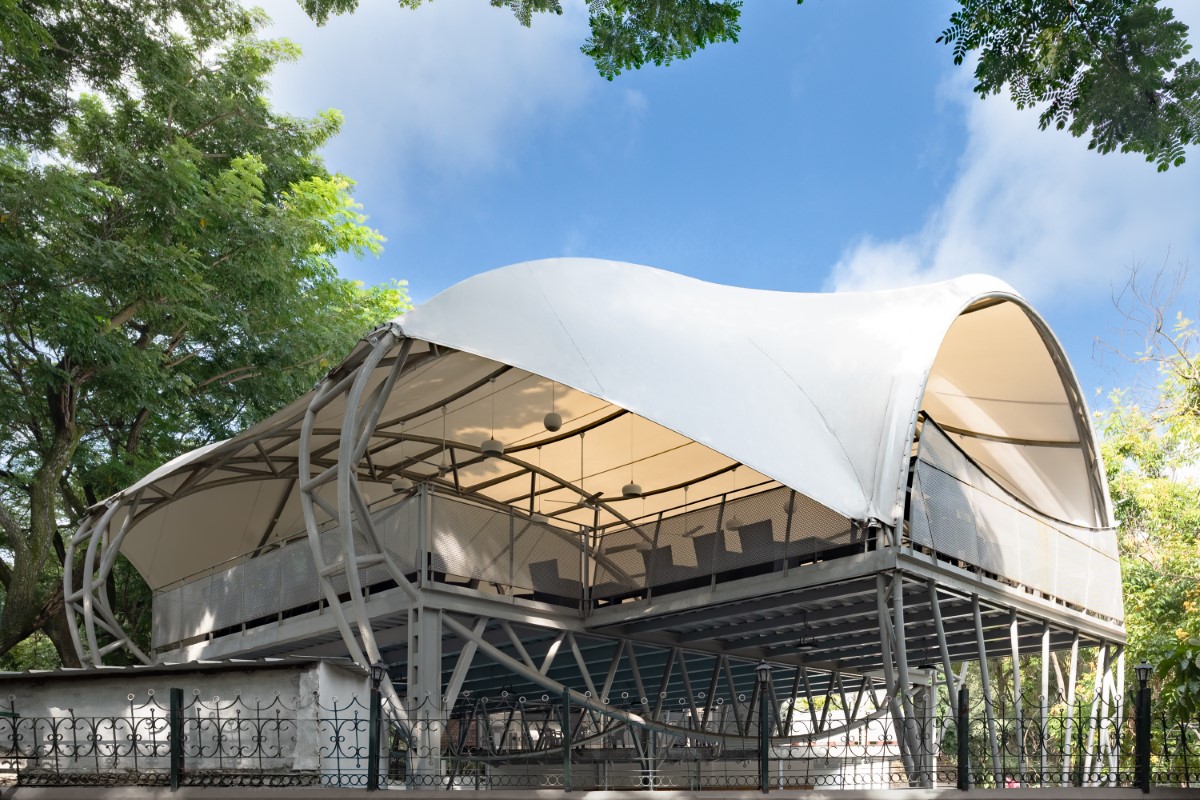Located in suburban NCR within proximity of South and West Delhi and very close to the International airport, Gulf Adiba is a proposed IT/ ITES office complex located in Udyog Vihar Phase II, Gurgaon. Just 1km off the National Highway 8, the building is aptly positioned on a 4000 sqm industrial plot within a dense office complex site comprising of another similar milieu.
With a design brief of a contemporary, yet elegant and functional edifice that had to be Vaastu-compliant, the development is envisaged as a paradigm shift that moves away from the typical, closed, work environment that creates a stressful work eco-system. The lack of a site context with no significant views determined the design development as a distinctive, introverted-planned, environment-friendly, climate-responsive built volume with sufficient recreational spaces that would allow for employee-interaction, engagement and pleasurable workspaces of both private and public nature. The building norms, permissible ground coverage (40%), a height restriction of 30m and FAR (2), further led the design to be conceived as a private, calm and serene building spread across Seven floors and a stilted open space that frees up the ground to brings in light and air circulation.
A low, recessed adjacent neighboring plot further enables the creation of an east-facing entry court that not only reinforces the private nature of the office but creates landscaped zones away from the neighboring noise and pollution. The porous ground-level also permits the movement of ample natural light and ventilation through the built volume, while crafting Interactive and recreational spaces as a part of the interiors. The site is planned to keep the site constraints and Vaastu considerations in mind that define a clean, north-east entrance and circulation to begin with, and marked with a water body. The south-west zone being blocked by construction further necessitated the conception of recreational spaces at every level. This outdoor space at every level generates spaces for interaction that are otherwise found as closed spaces within offices while aiding a visual connect and air movement.
An orientation-sensitive design is enabled by stepping the built-form as it recedes South to North, enabling the North-Glazed façade with scatter free light and ensuring that all internal courts get sufficient sunlight. It also allows for terraces to be formed on the Southern Side, full of sunlight and ventilation, a welcome break from enclosed office spaces. To enable wind flow and ensuring that all units get sufficient ventilation, the North and south are retained as open to allowing for the movement of summer and winter winds. In the absence of any formal site influences, a fluid, rhythmic, yet continuous form is inspired by nature to create an iconic identity in the otherwise mundane surroundings achieved by the creation of gradually, steeping up terraces. A Roof line is developed that follows the floor profile to complement the overall form of the built volume resulting in a structure that bears a resemblance to the sand dunes in the deserts of the Middle East with the distinct floors characterized by the ripples on a sand dune. Adopting the innovative technology of a space frame with glass, polycarbonate panels to create a semi-covered roofing system at the top, to which the building tapers to and enables the aerial view to be viewed as a vague ‘8’. The parapets are further softened by the optimization of greenery and planters along the railing. Embedded lighting design further accentuates the curvilinear form of the building.
Drawings –
Project Information Sheet
Typology : IT Building
Name of Project : Gulf Adiba
Location : Plot No. 272, Udyog Vihar, Phase-2, Gurgaon.
Name of Client : Gulf Asphalt Pvt. Ltd.
Name of Client’s Firm : Gulf Asphalt Pvt. Ltd.
Contact Person : Mr. Ayush Goel
Address : 301, Udyog Vihar 2, sector 20, Gurgaon, Haryana.
Principal Architect : M/s Design Forum International
Design Team : Abhishek Sinha, Girish Joshi, Shamim Khan
Site Area (sq ft & sq m) : 4000sqm.
Built-Up Area (sq ft & sq m) : 16830 sqm.
Start Date : September 2015
Targeted Over to fit-outs : Dec 2017

